Vienna, the capital of Austria, is a city steeped in history, culture, and timeless beauty. From its impressive Baroque architecture to world-class museums, historical coffeehouses, and delicious cuisine, this city has something for every traveler. With so much to see and do, you’ll definitely want to go in with a plan, and that’s where my 3-day Vienna itinerary comes in hand.
As someone who’s visited numerous cities throughout Europe, often on short 2-3 day jaunts, I’m here to help you make the most of your 3 days in Vienna. Whether you’re an art enthusiast, history buff, or just looking to enjoy the city’s charm, this guide will provide you with an itinerary that covers the most popular landmarks and experiences to ensure you have a memorable visit.
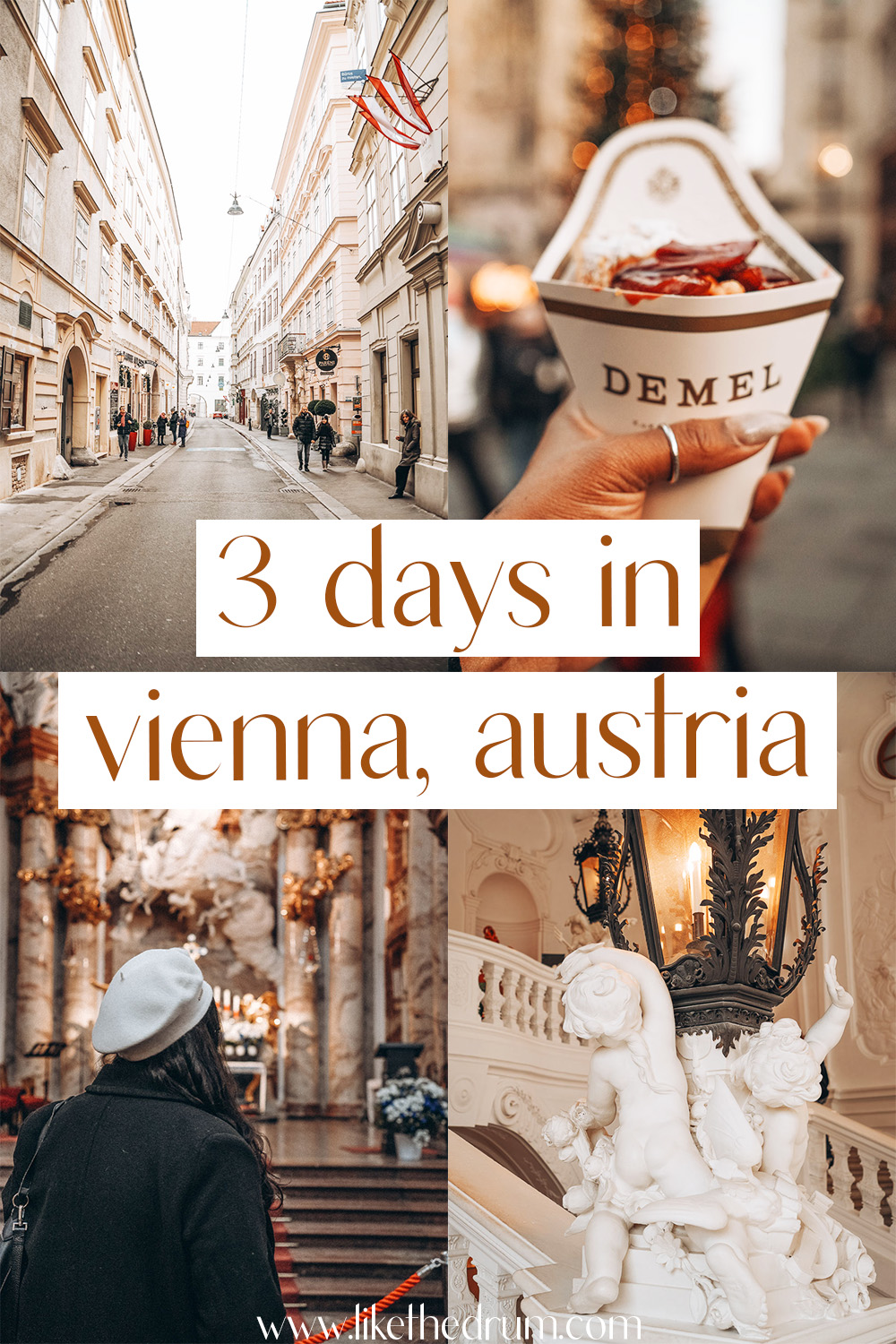
*This post contains affiliate links. Which means that if you purchase something after clicking on a link, I may earn a small commission at no extra cost to you.
Vienna Quick Facts
Language(s): German is the main language in Austria but English is also widely spoken.
Currency: Euro
Credit Cards vs Cash: Credit and debit cards are pretty much taken everywhere. However, you’ll want to keep a small bit of cash on you just in case you wind up somewhere you need it.
Major Airport(s): Vienna International Airport (VIE)
Plug Type: Austria uses plug type C with a standard 230v voltage. I recommend this world adapter that will cover you across most countries.
Safety: With a low crime rate and well maintained streets that are typically clean and well lit, Vienna is generally considered to be very safe. I visited with my friend Brooke and we never felt uncomfortable walking around.
Also, don’t forget to purchase travel insurance before you go!
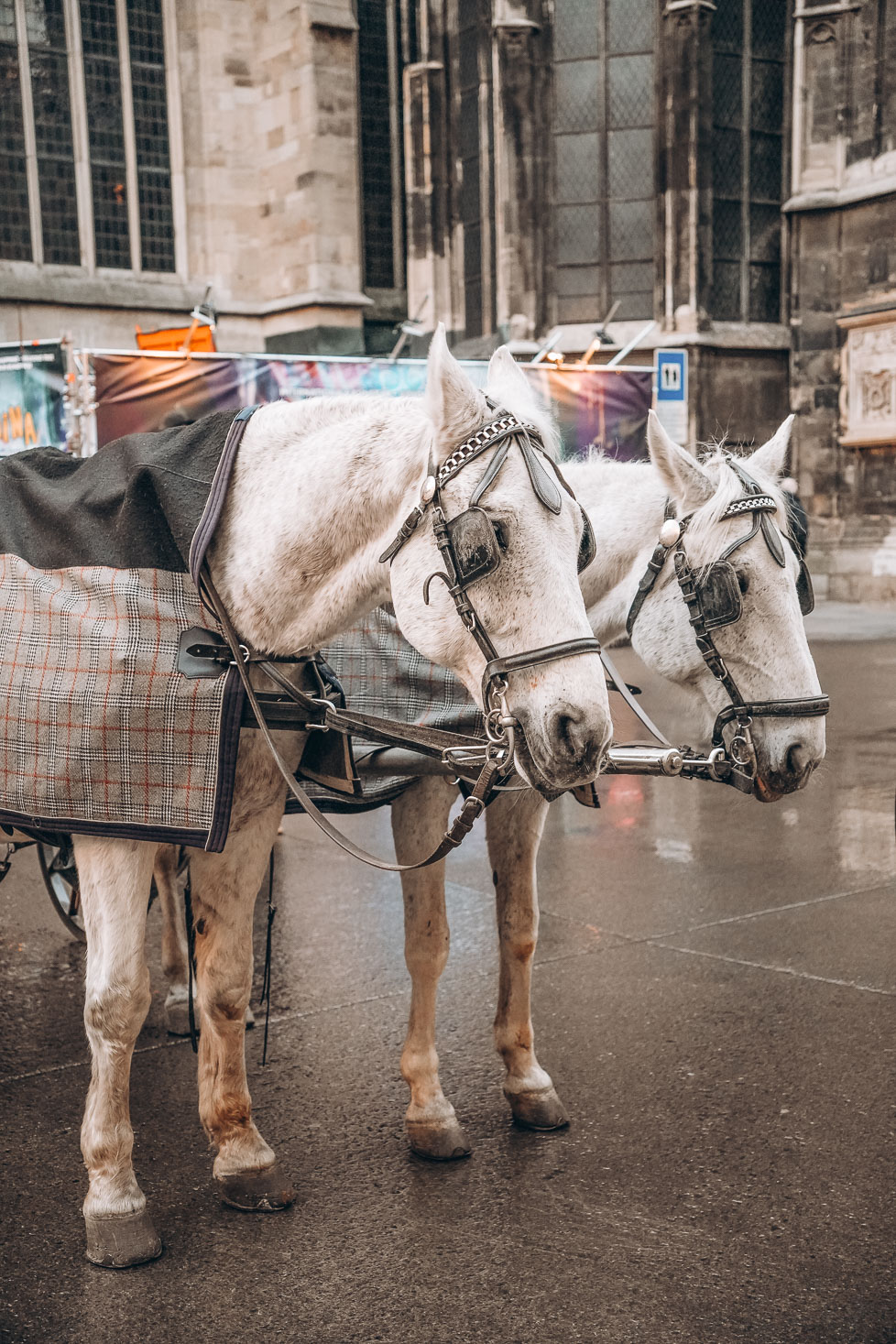
Best Time to Visit Vienna
The best time to visit Vienna, Austria depends on your weather and crowd preferences.
If you’re looking for pleasant weather and fewer crowds, you may want to visit in the spring or fall. During the spring the weather averages between 50°F to 68°F (10°C to 20°C) and the city is less crowded than in peak summer months. Plus, you’ll be able to enjoy events like Vienna’s Spring Festival and the Philharmonic Spring Converts.
Summer is peak tourist season with the average temperatures hanging around the high-60s to high-80s. With lots of sunshine. It’s ideal for outdoor activities like exploring Vienna’s many parks, The Vienna Festival, or the open-air movie screenings in front of Rathaus.
Or, if you’re looking to soak in some holiday charm, Vienna during the winter is pretty magical. Temperatures stay in the 30°F to 41°F (-1°C to 5°C) range which isn’t too bad if you pack the right items. The city comes alive with festive-lit streets, seasonal treats, and beautiful Christmas markets.
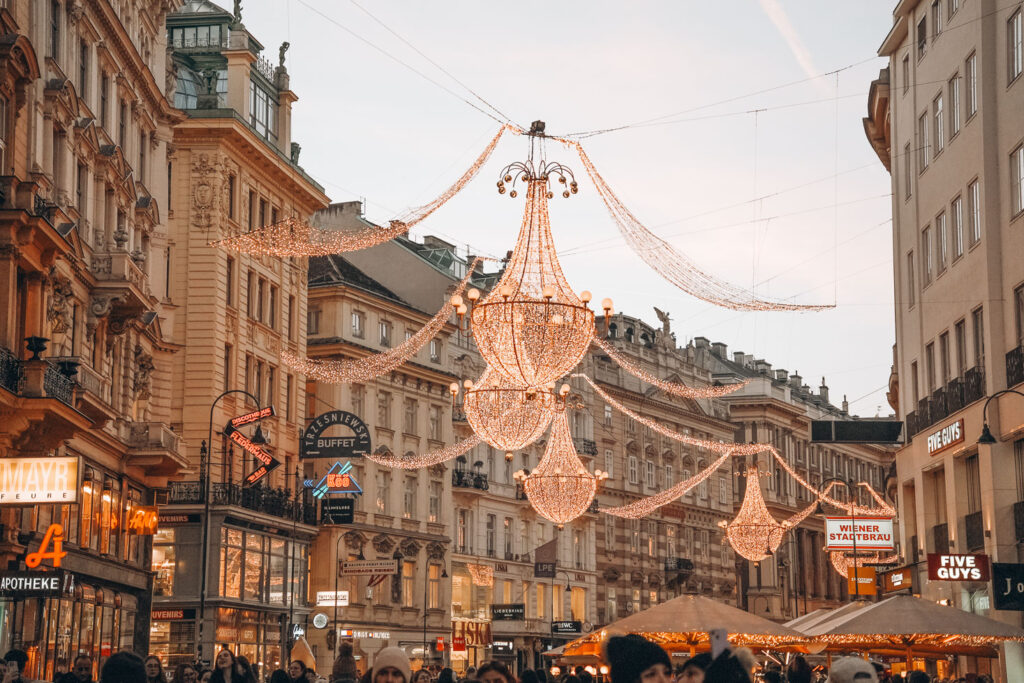
How to Get to Vienna
By Plane
Vienna International airport (VIE) is the main gateway to the city. Located about 11 miles from the city center, it’s a modern airport with great facilities. Flights from all around the world fly into VIE, which makes it a popular entry point for international travelers.
To get to the city from the airport, you can take CAT (City Airport Train) which takes a little over 15 minutes to get to the city center or the S7 train which takes about 25 minutes.
Alternatively, you can take an airport bus which runs to different parts of the city including Wien Westbahnhof, a well-connected train station in Vienna. Depending on traffic, the journey can take 30-40 minutes.
Lastly, you can simply take a taxi ride from the airport for door-to-door service. Taxis are typically the most expensive way to get around but also the most convenient.
By Bus
If you’re traveling from a nearby city like Budapest, Prague, or Bratislava, the bus is a budget friendly way to get to Vienna. Vienna International Bus Terminal (VIB) is the main bus station in the city and is about 6 miles from the city center.
From VIB, you can take a tram, bus, taxi or the subway (U3 orange line) to get to the city center.
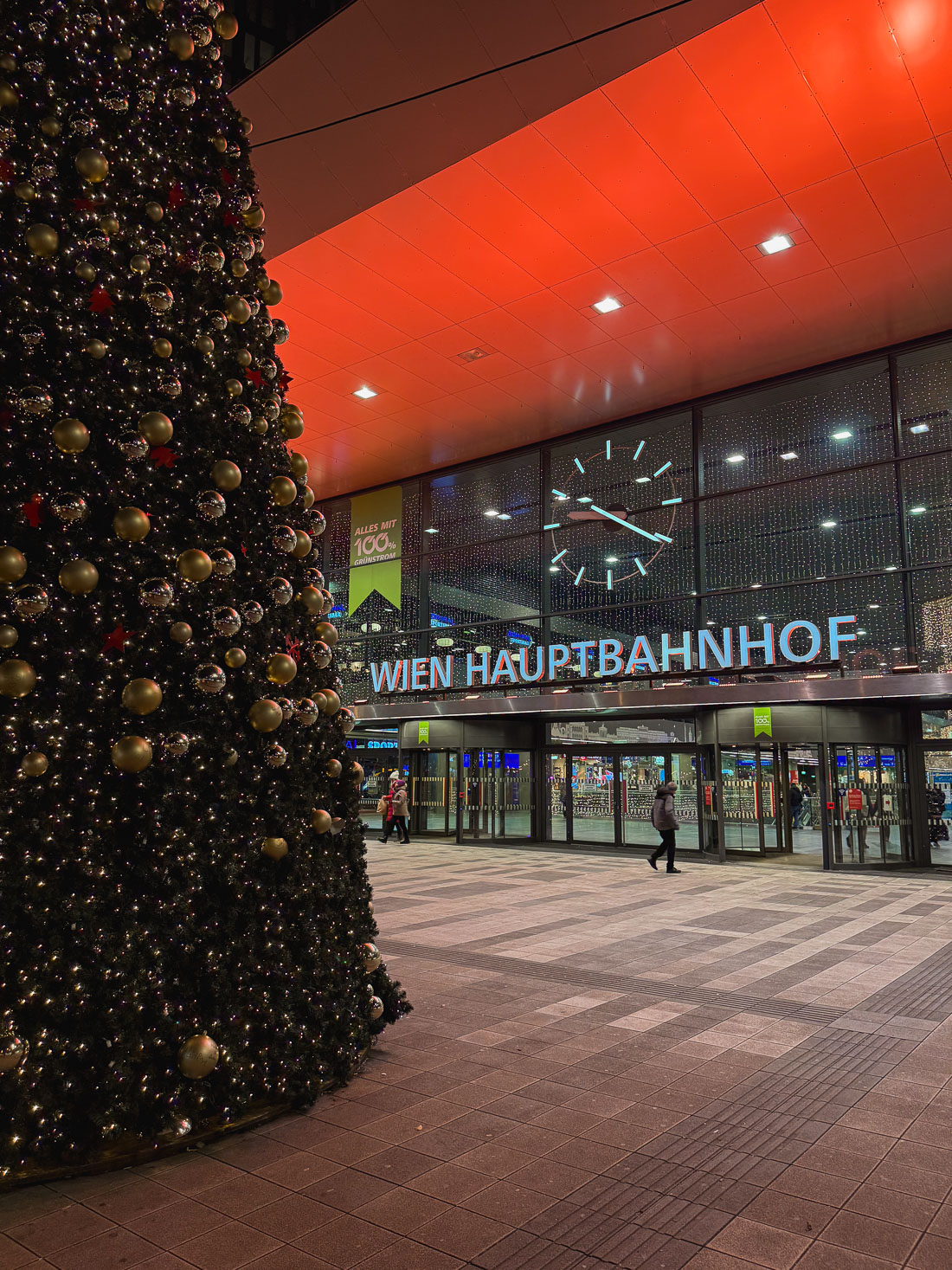
By Train
Vienna’s main train station is Wien Hauptbahnhof. It’s a major international and domestic transportation hub and offers connections from all across Europe.
To get from Hauptbahnhof, you can take the U1 (red line) which will take you directly to Stephansplatz, the heart of the city.. There’s also buses and trams that will connect you to different districts and landmarks. And as always, you can take a taxi or rideshare like Bolt to take you directly to your hotel.
3 Days in Vienna Itinerary: Overview
Day 1
- CRO
- Jesuit Church
- Perfume Making at Cosmotheca
- Aida
- St. Stephen’s Cathedral
- Figlmüller
- Demel
Itinerary Day 2
- Cafe Central
- Schonbrunn Palace
- Hofburg Royal Complex
- Austrian National Library
- Gerstner K. u. K. Hofzuckerbäcker
- Vienna State Opera
Day 3
- Belvedere Palace
- St. Charles’ Church
- Brasserie Palmenhaus
- Vienna City Hall / Rathausplatz
- Eiles Cafe
3 Days in Vienna Itinerary: The Breakdown
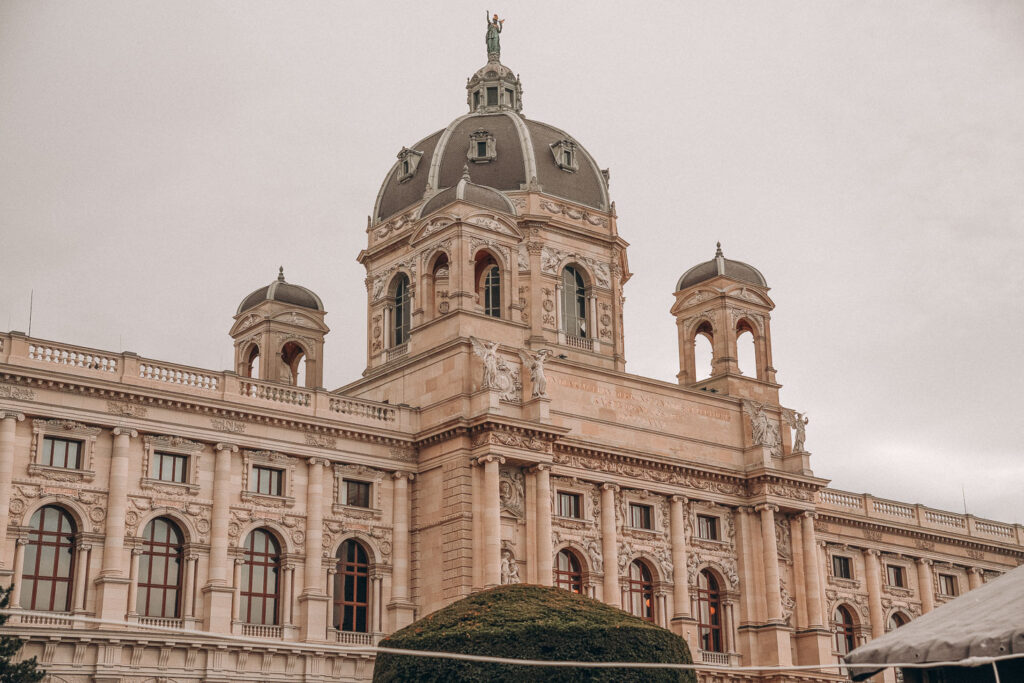
3-Day Vienna Itinerary: Day 1
CRO
Kick off your time in Vienna with a visit to CRO, a small cafe serving up some incredibly delicious croissants. I ordered a classic latte and a pistachio croissant, both of which were really good.
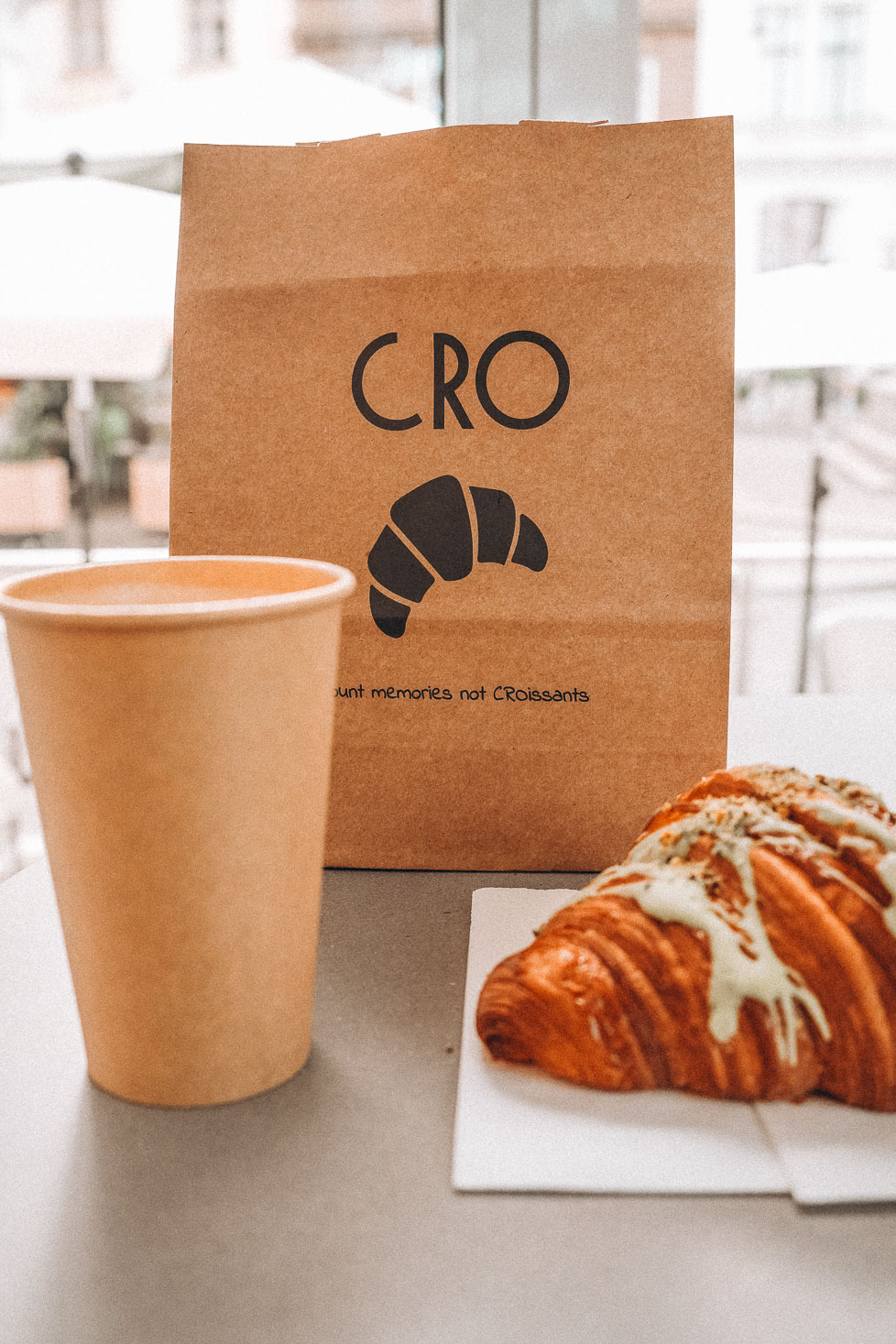
Perfume Making at Cosmotheca
One of my new favorite things to do while on a trip is making custom scents. I first made a perfume in Marrakech, then made another fragrance at The Flavor Design in Osaka, and then another one at My Only Fragrance in Kyoto.
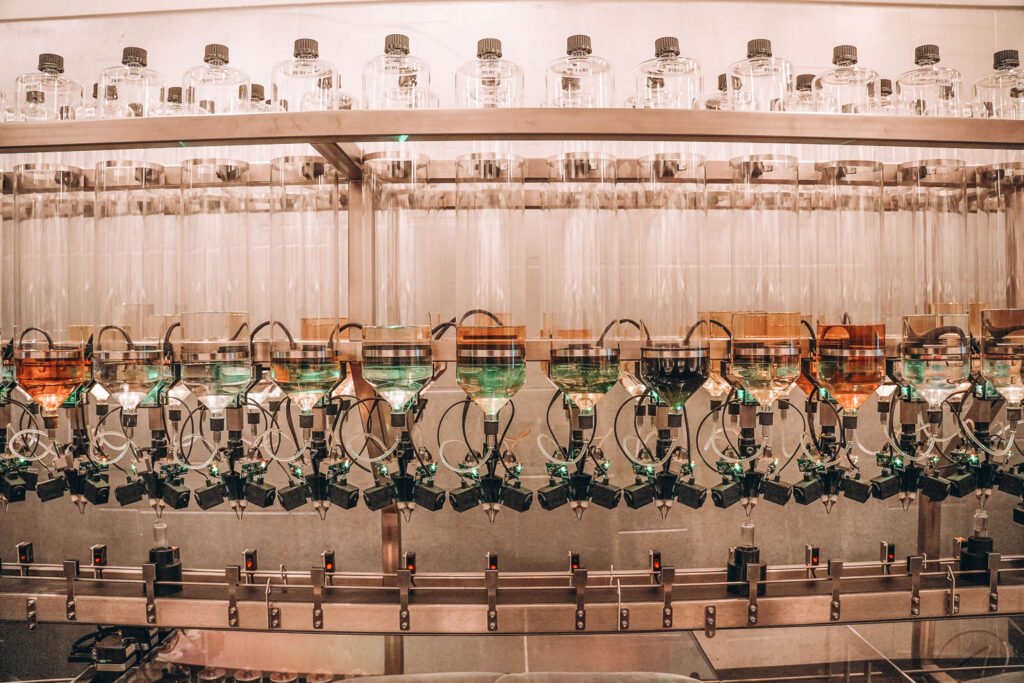
So, when Brooke sent me an Instagram reel of the AI perfume making at Cosmotheca, I knew it was something we had to do.
You start off by taking a quiz that assesses your personality, the kind of person you are/want to be, and some general fragrance preferences. Then, the system creates 3 fragrances it thinks you’ll like based on your responses. From there, you can tweak two of the scents to create something unique or make duplicates of the ones you love. It’s €40 for the experience and you’ll walk away with 5 scent minis. We actually got 6 because we got an additional scent for reviewing the process.
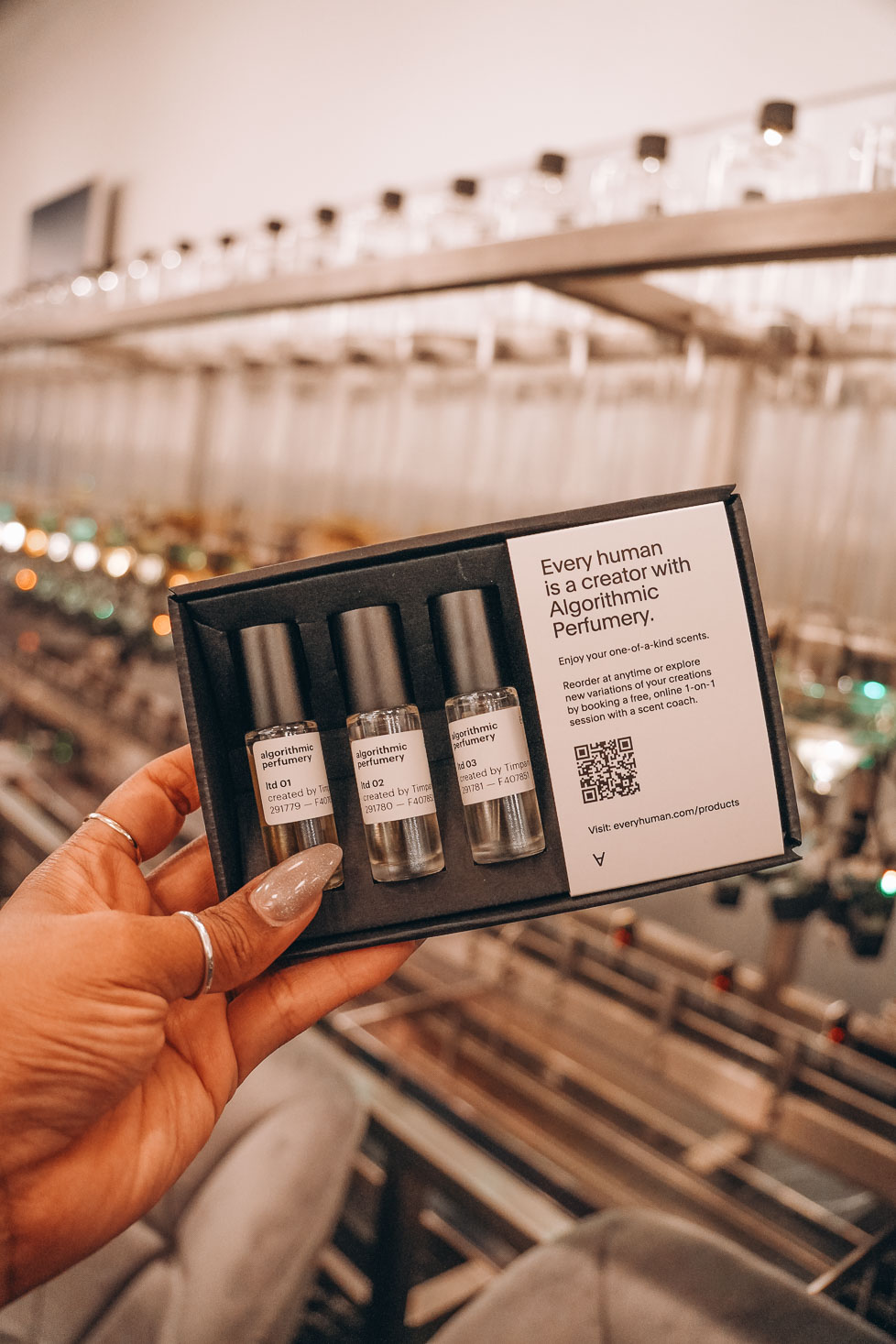
There are no reservations for this, and it works on a walk-in basis. There was only one group ahead of us when we walked in, but it definitely started picking up as we were going through.
Jesuit Church
A short walk from Cosmotecha, you’ll find the beautiful Jesuit Church, also known as the Church of St. Peter or Pfarrkirche St. Peter.
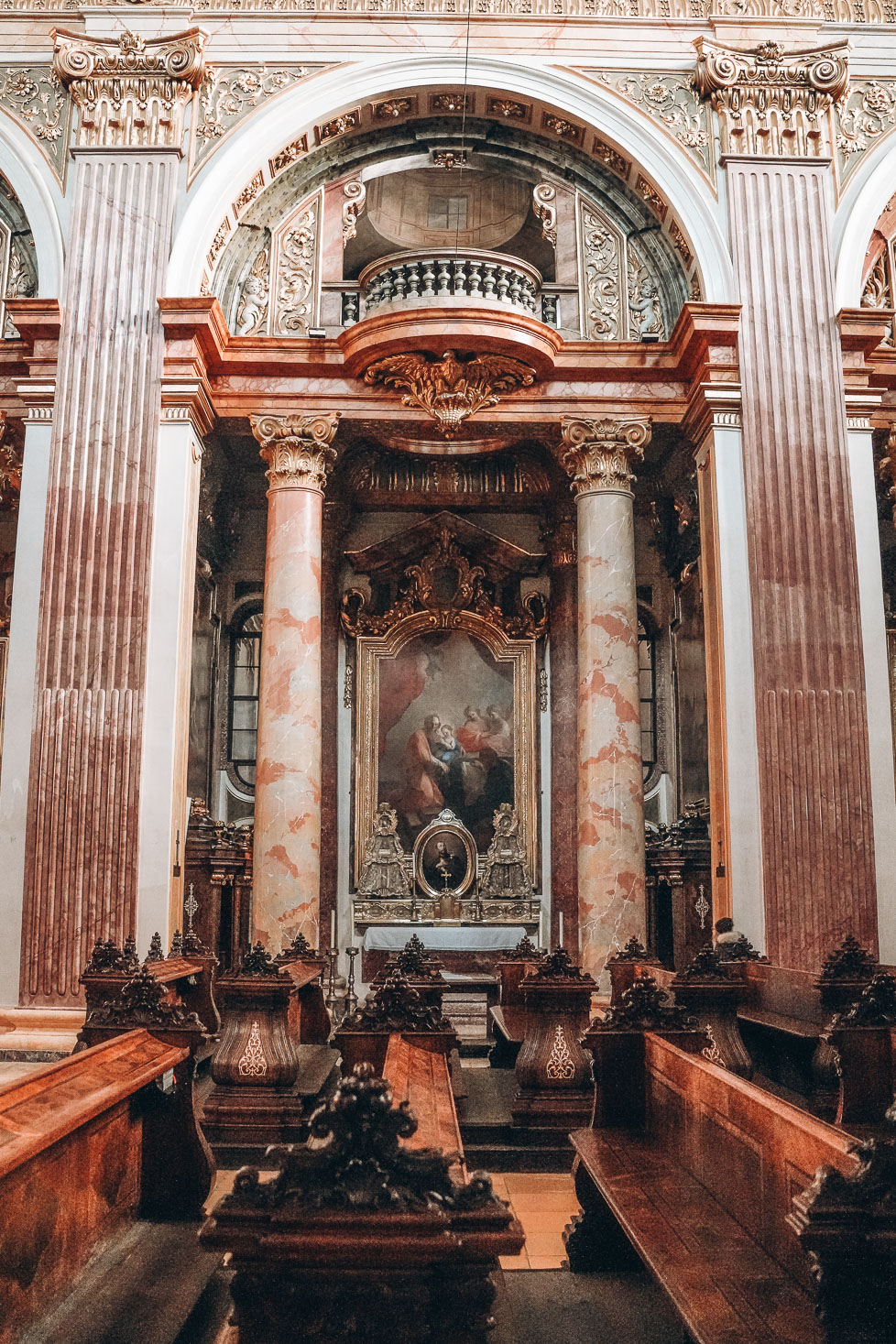
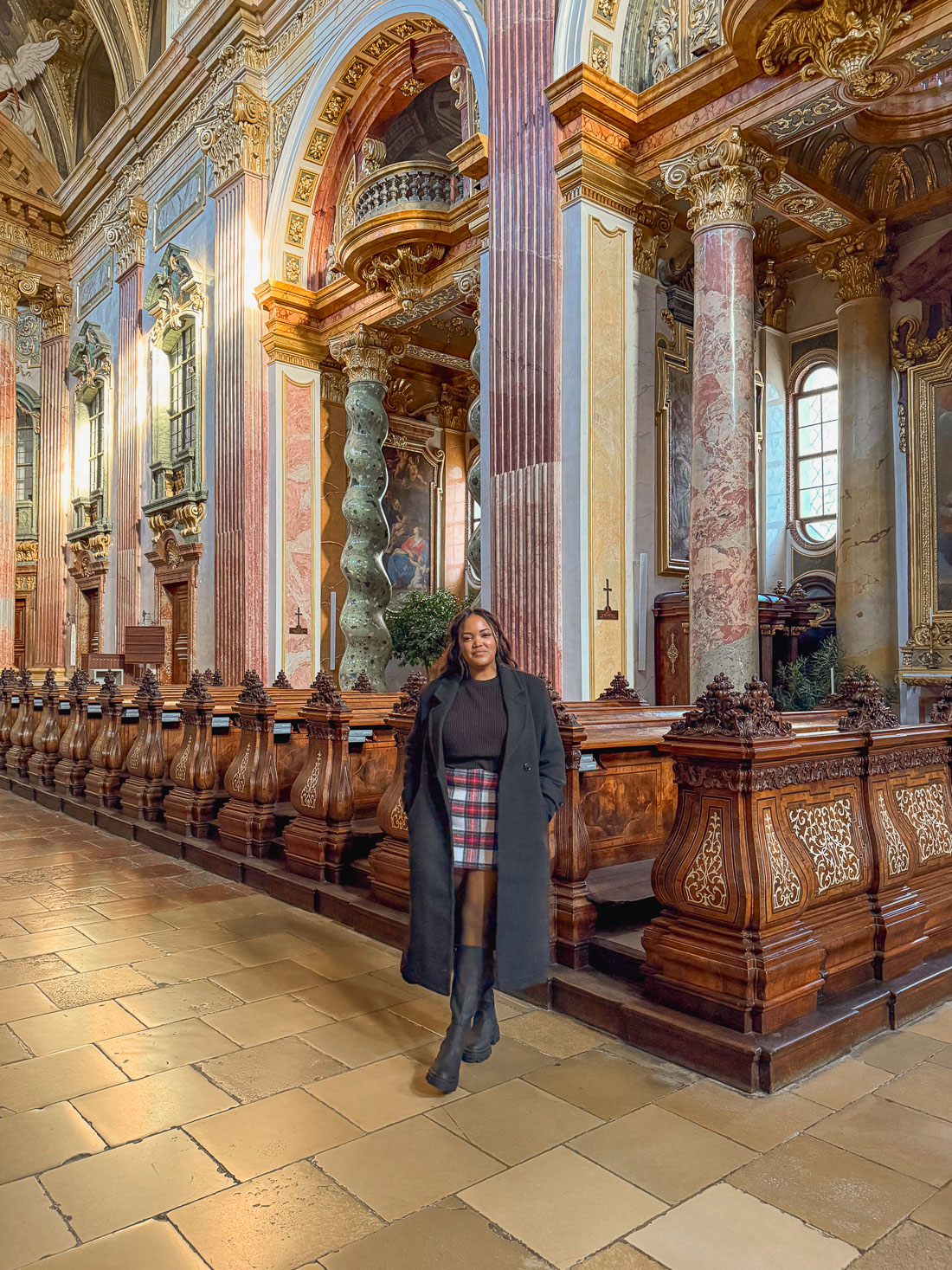
This baroque-style Catholic church was constructed in 1733 by the Jesuit order. From the modest outside, you would never suspect the beauty that awaits you inside. From the magnificent frescoes to the stunning pink marble pillars and gold leaf details, this is easily one of the most beautiful churches I have visited.
I’m not sure if it’s just not a popular tourist spot yet, or if we got lucky, but we were able to spend about 10 minutes in the church by ourselves just admiring its beauty.
Lunch at Cafe Aida or somewhere else near Stephansplatz
Continuing on with the pink theme, head over to Cafe Aida for lunch. I’ll be honest we were drawn to this place because of its pink and cutesy aesthetic. The food was okay for what it was, but I think this is definitely more of a coffee and cake place. That being said, there’s plenty of restaurants around Stephansplatz which is where the next stop on this itinerary is.
St. Stephen’s Cathedral
After lunch, it’s time to visit one of the most iconic sites in Vienna, St. Stephen’s Cathedral.
St. Stephen’s Cathedral, also known as Domkirche St. Stephan is known for its architectural beauty and historical and cultural significance. Deemed a UNESCO World Heritage Site, it’s one of the most visited sites in Vienna.
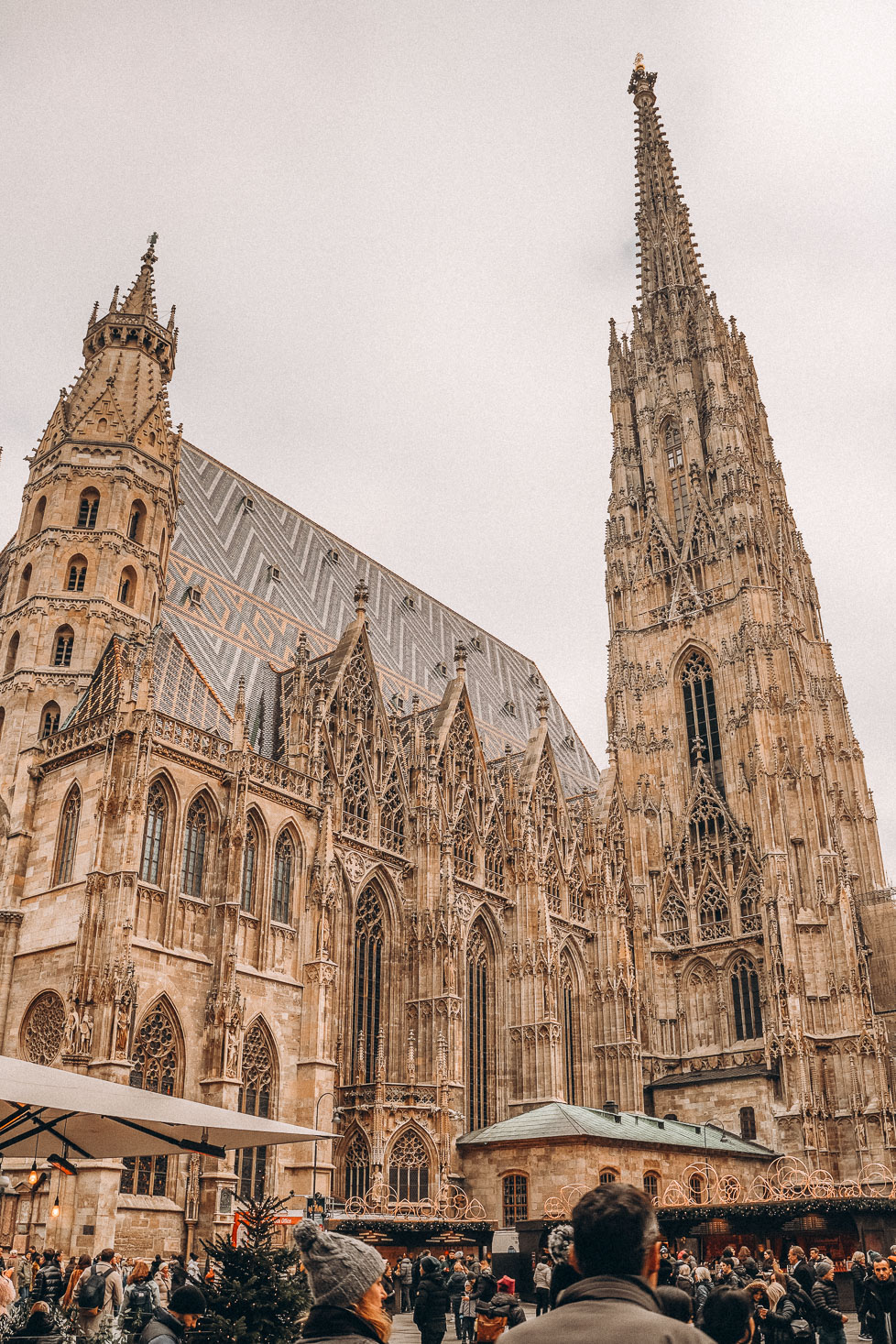
It’s free to enter the church; however, you’ll have to pay an entrance fee to visit the catacombs or climb the towers. If you’d like to see it all there’s an all-inclusive ticket for €25 that covers a self-guided digital tour of the church, an in-person tour of the catacombs, entrance into the north and south towers, and a visit to the cathedral museum.
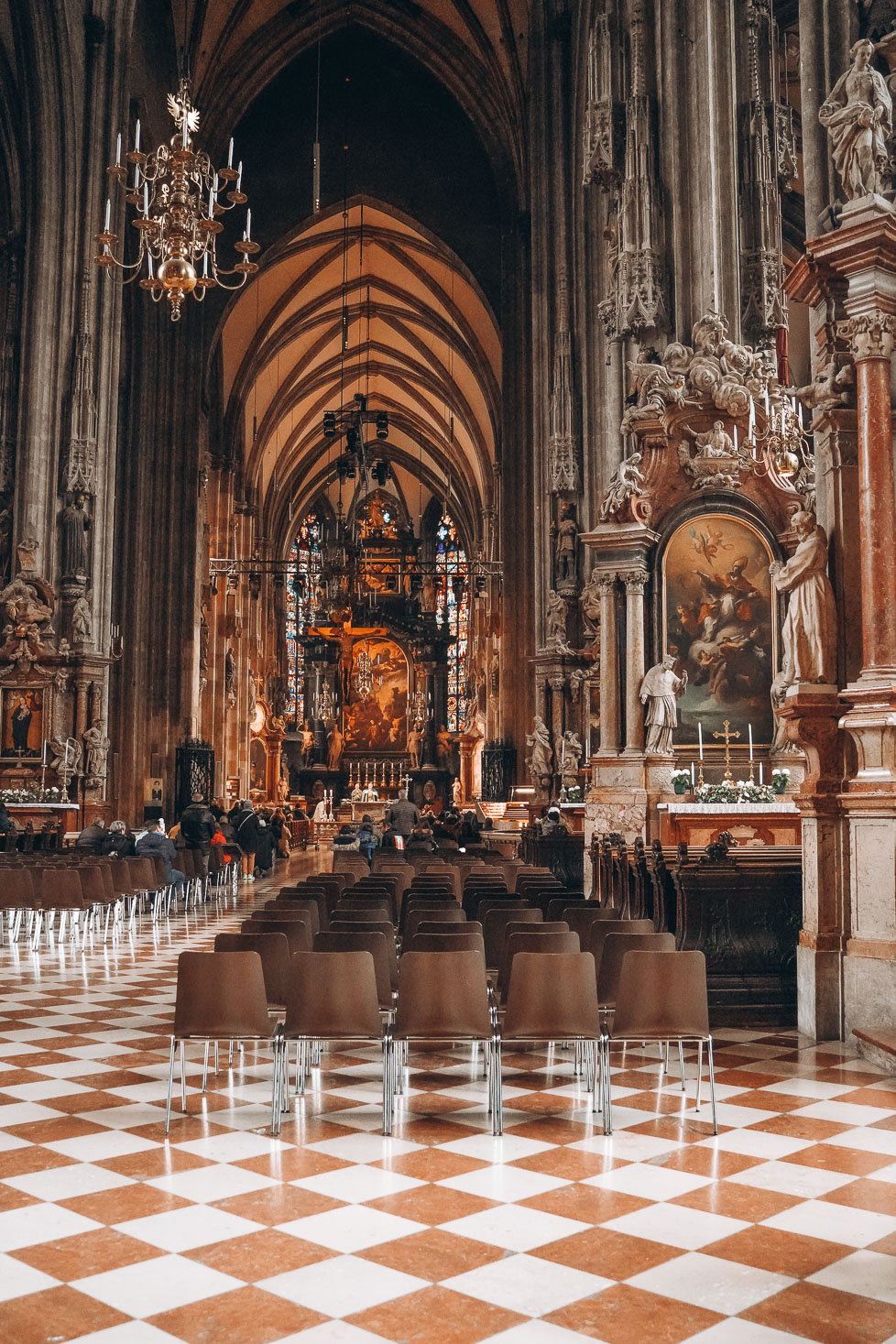
We only visited the church but if I’m ever back in Vienna I’d love to visit the towers and catacombs.
Wander the Streets of Vienna
Stepping outside of the church, it’s time to check out Vienna’s vibrant shopping district and wander the beautiful city streets. For example, Graben is a popular pedestrian-friendly avenue known for its blend of historical charm and modern luxury. Lined with nice boutiques, high-end designer stores and cafes, it’s the perfect place for an afternoon stroll.
Pop into some shops, grab a cup of coffee and just enjoy the splendor of the city.
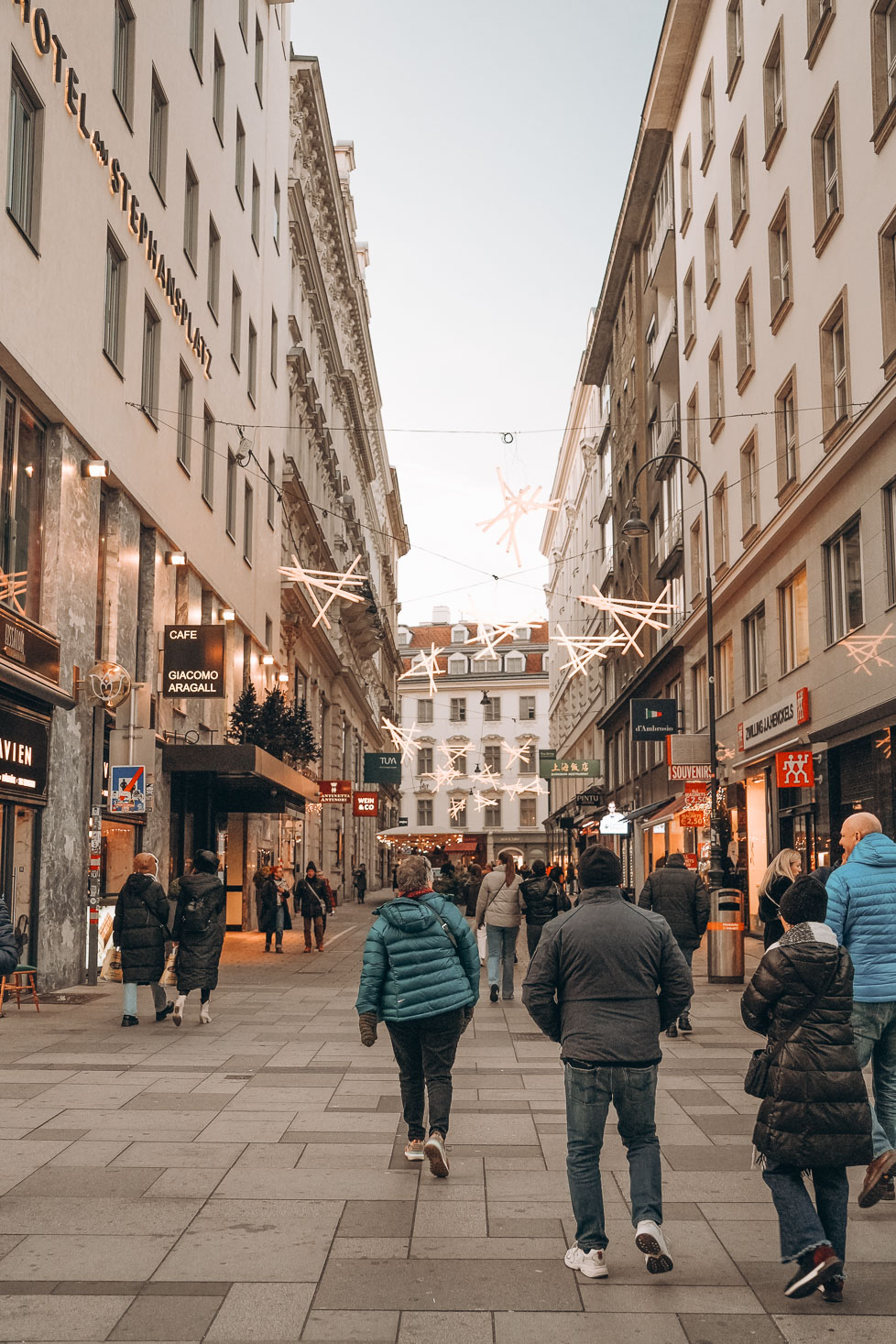
Figlmüller
Once you’re done shopping, it’s time to try a classic Viennese dish, wiener schnitzel. For those of you who are unfamiliar, wiener schnitzel is a thin veal cutlet breaded and pan-fried to perfection.
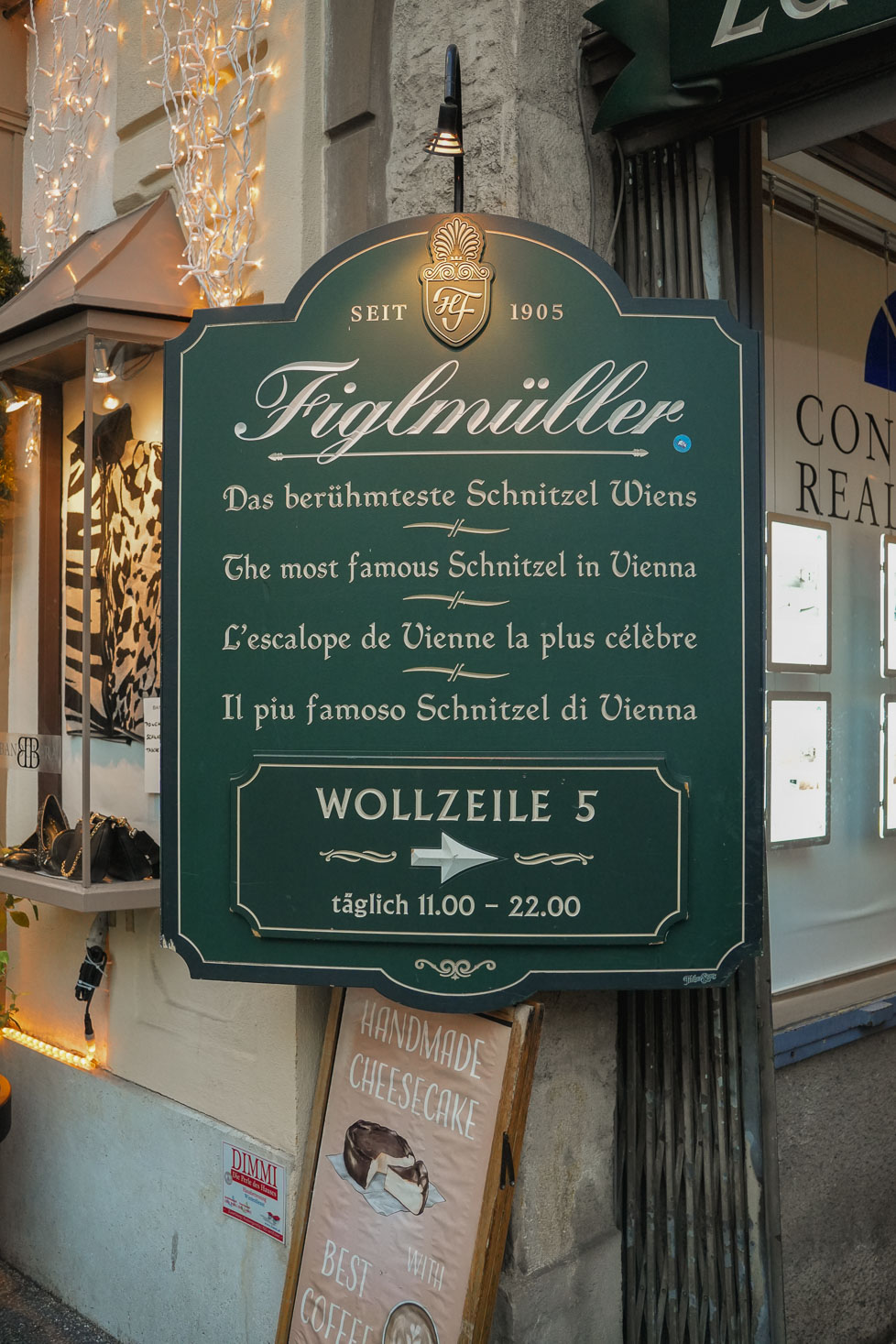
Not too far from St. Stephen’s Cathedral you’ll find Figlmüller, a restaurant known for their wiener schnitzel. This is one of the most popular restaurants in Vienna so I highly recommend getting a reservation.
Outside of the wiener schnitzel, you also need to try the potato salad which is unlike anything I’ve ever had, but it’s also very good. Pair your schnitzel and potato salad with a glass of wine or and a classic Almdudler.
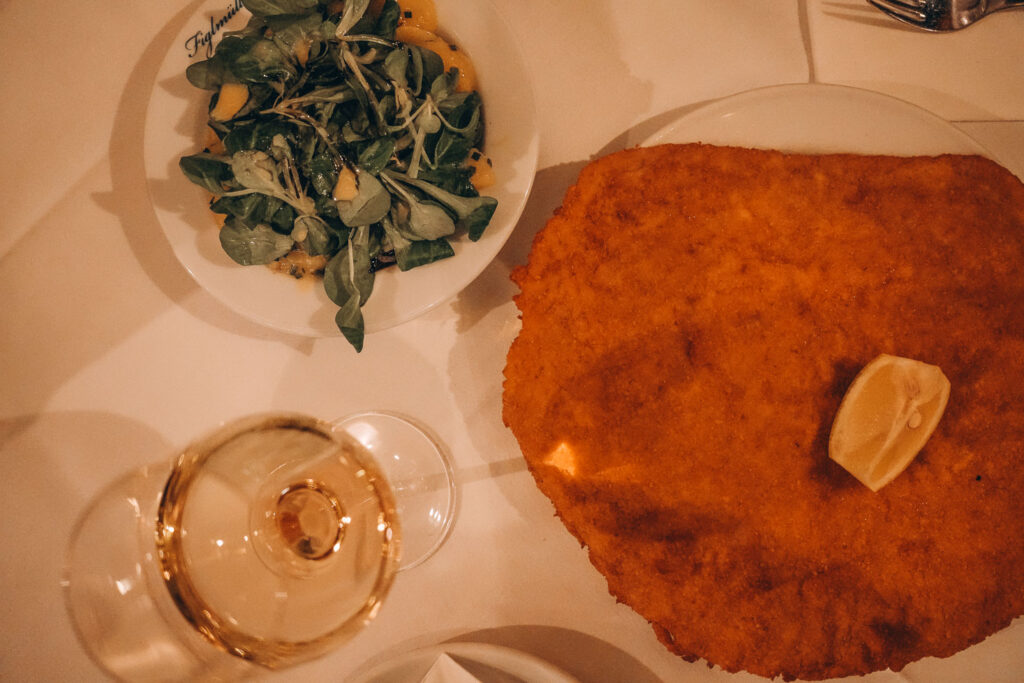
Demel
Skip dessert at Figlmueller, and head over to Demel instead. They serve kaiserschmarrn, a fluffy, shredded pancake with caramelized bits served with powdered sugar and plum compote.
It’s absolutely delicious, and a must-try while in Vienna.
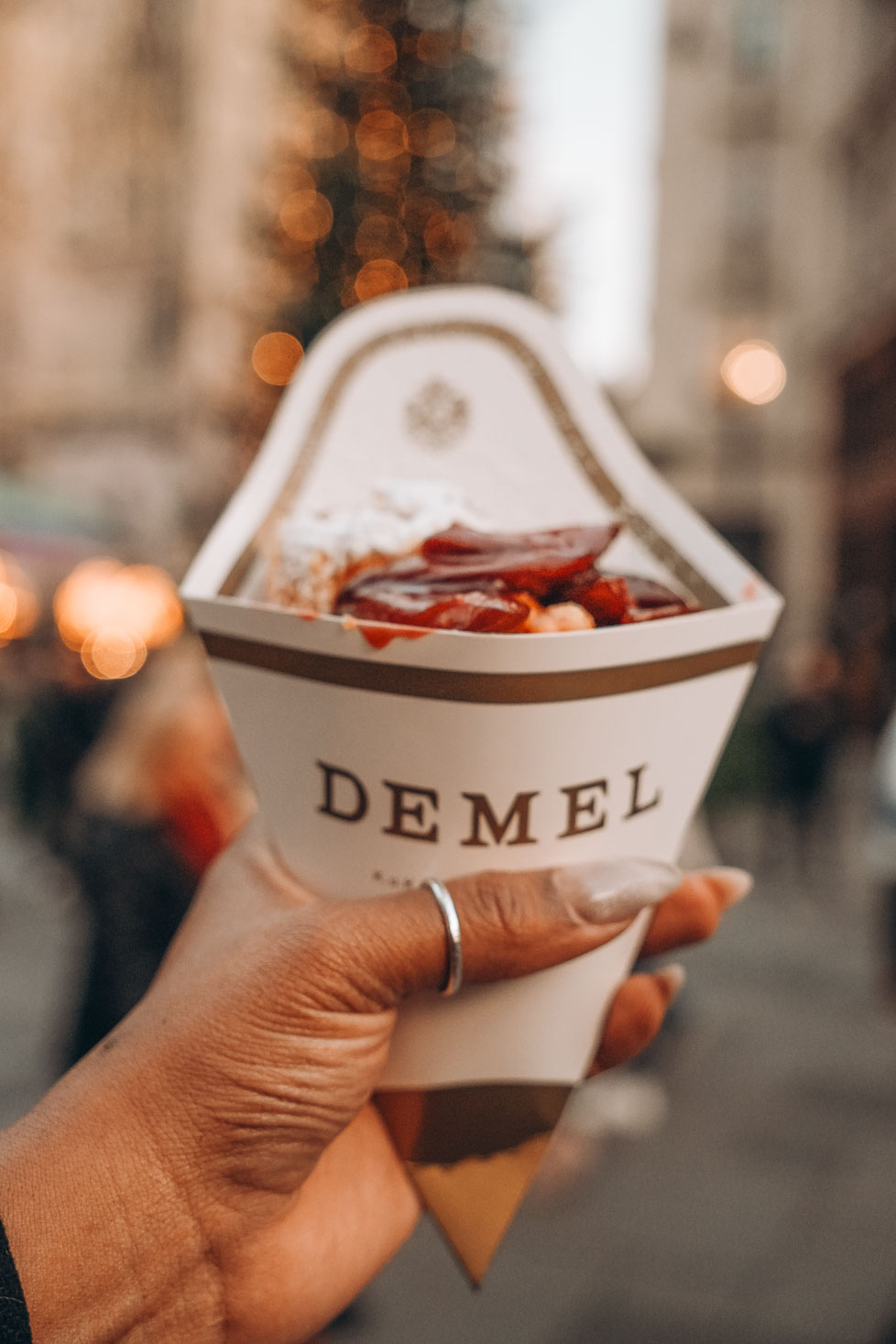
3-Day Vienna Itinerary: Day 2
Cafe Central
Kick off day 2 in Vienna with breakfast at Cafe Central, a legendary coffeehouse that dates back to 1876. The cafe has an old-world ambience complete with high ceilings and elegant columns making it a beautiful place to start your day.
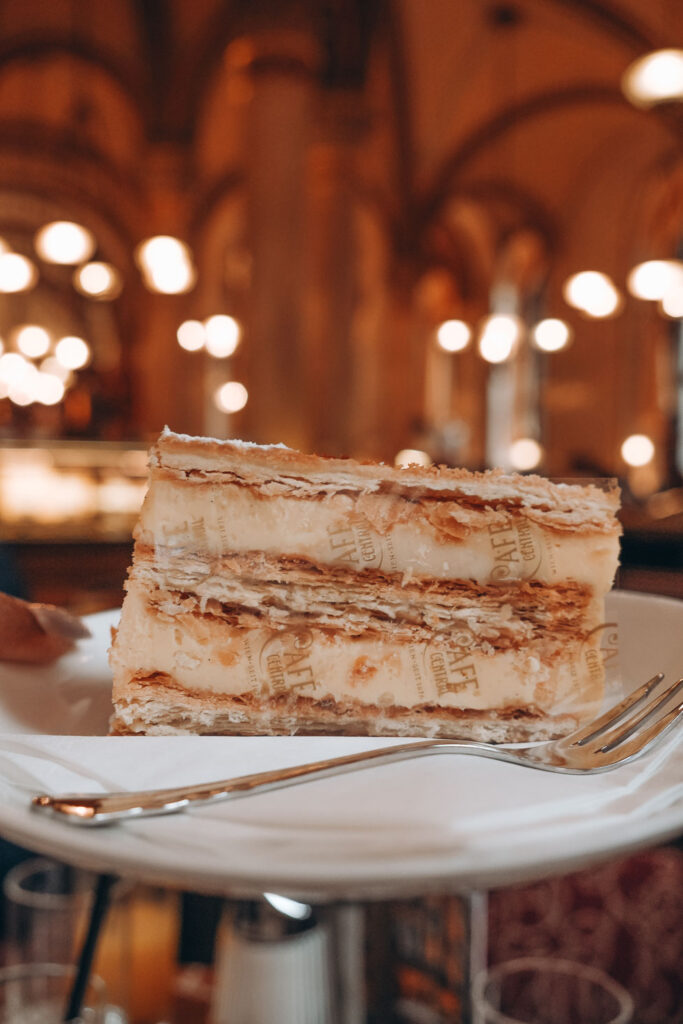
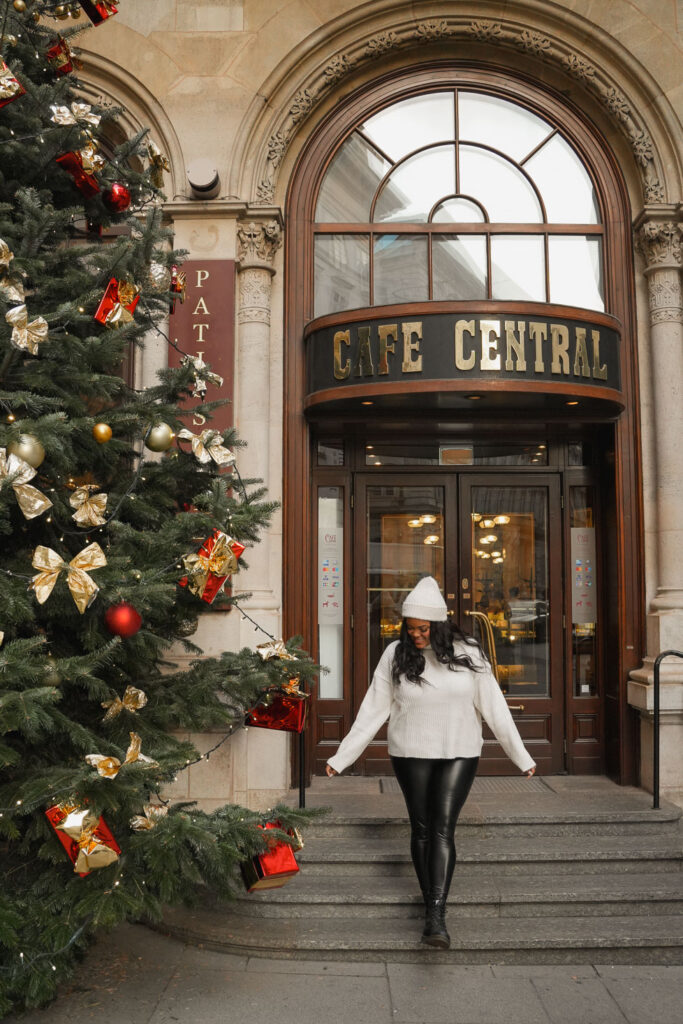
They do have some savory options, but this is definitely a coffee and cake kinda place. We ordered an egg and ham scramble which was good but nothing to write home about. However, we also ordered a piece of the Cafe Central Schnitte, a dessert with layers of puff pastry and vanilla cream, that was pretty dang good.
So, I’d recommend skipping the eggs and heading for the dessert counter for something sweet and a coffee instead.
Schönbrunn Palace
Leaving Cafe Central, it’s time to visit one of the many palaces in Vienna.
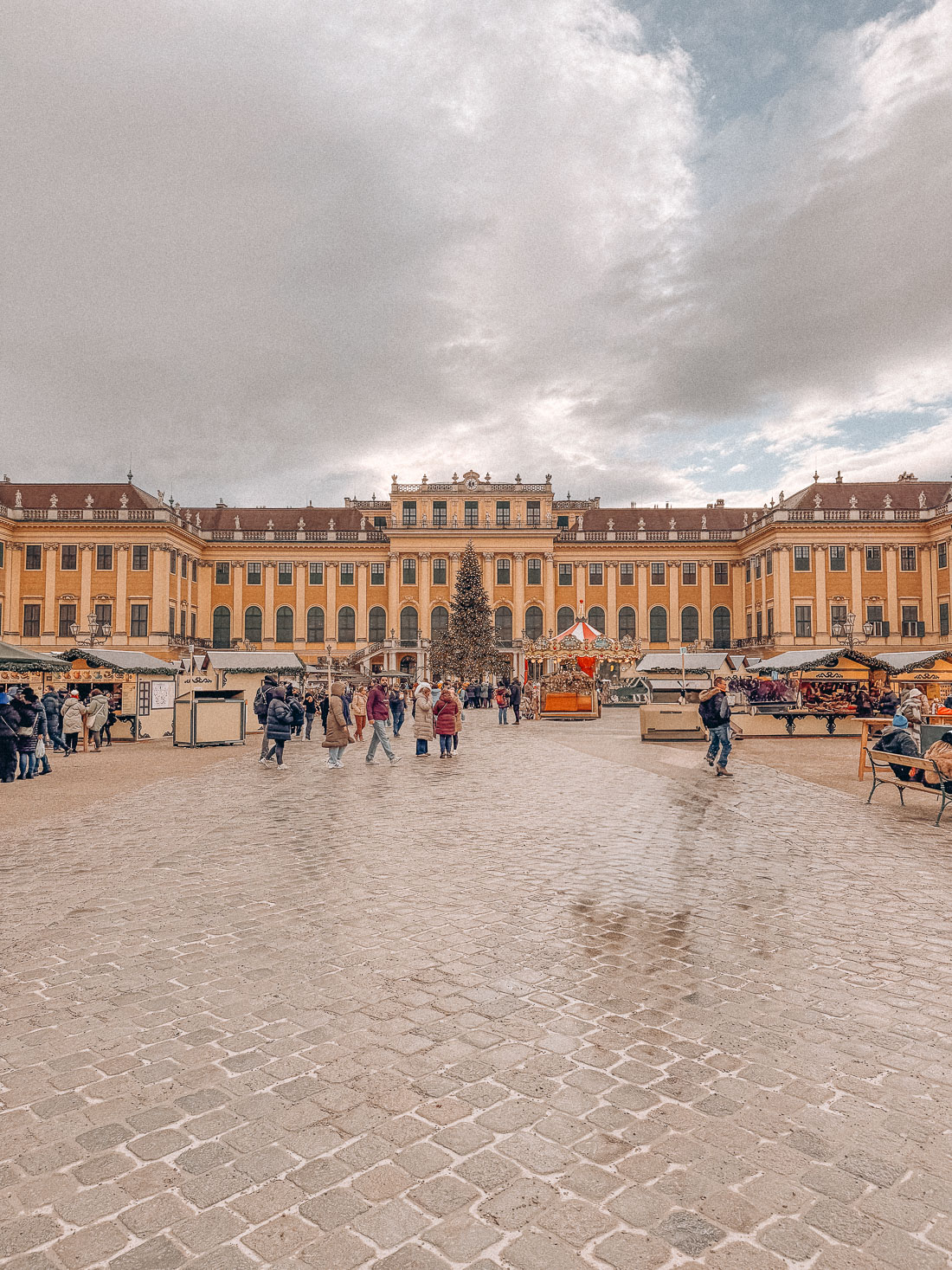
Located slightly outside of the city center, Schönbrunn Palace is another one of Vienna’s most iconic landmarks. This stunning baroque palace features over 1,400 rooms and is considered an architectural masterpiece.
Two of the most famous rooms in the palace are the Great Gallery, which hosted royal balls and other events, and the Hall of Mirrors, a beautiful space with amazing frescoes and crystal chandeliers. As you go through the palace,you’ll learn about the Habsburg family, one of Europe’s most influential royal dynasties.
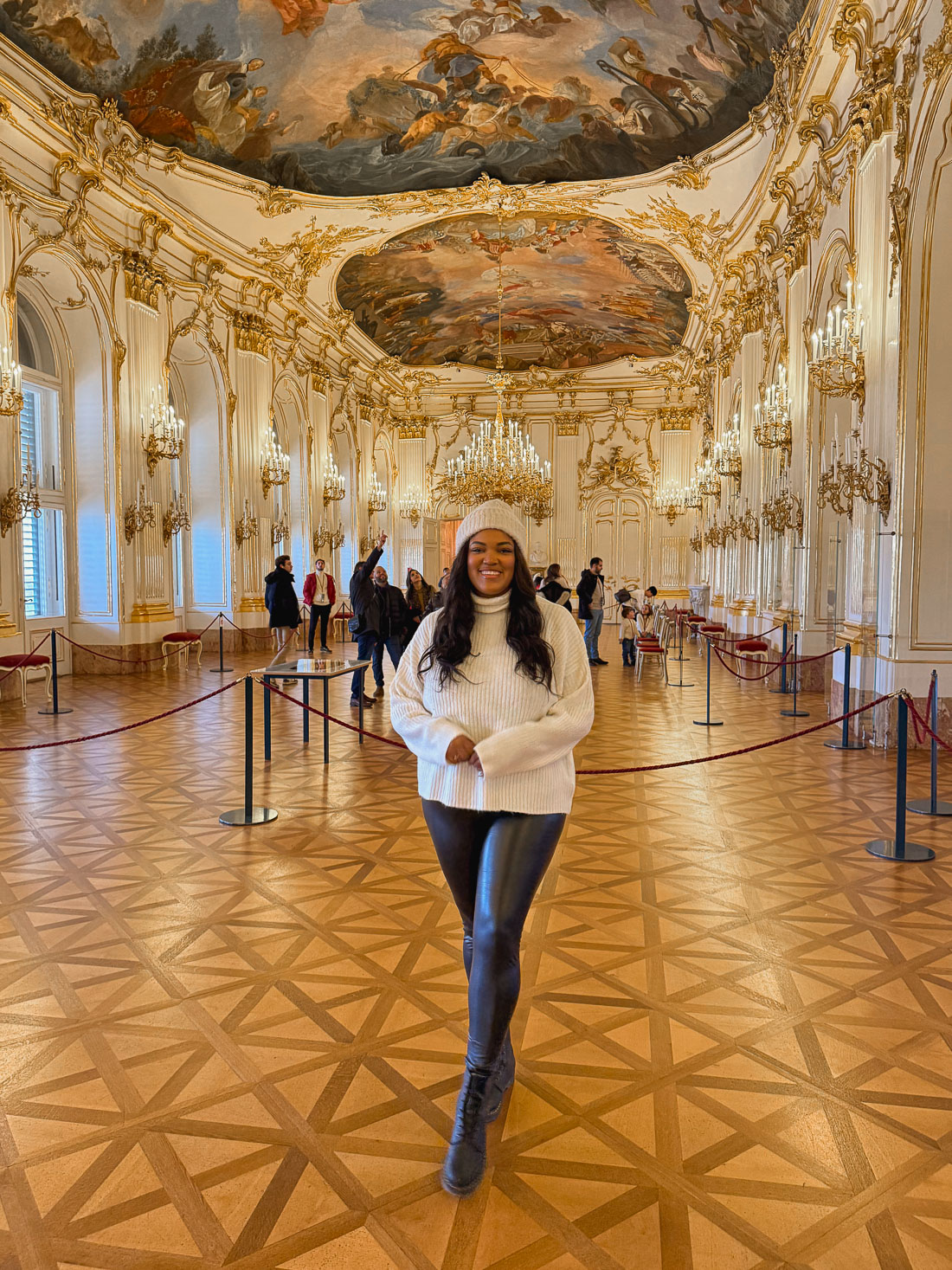
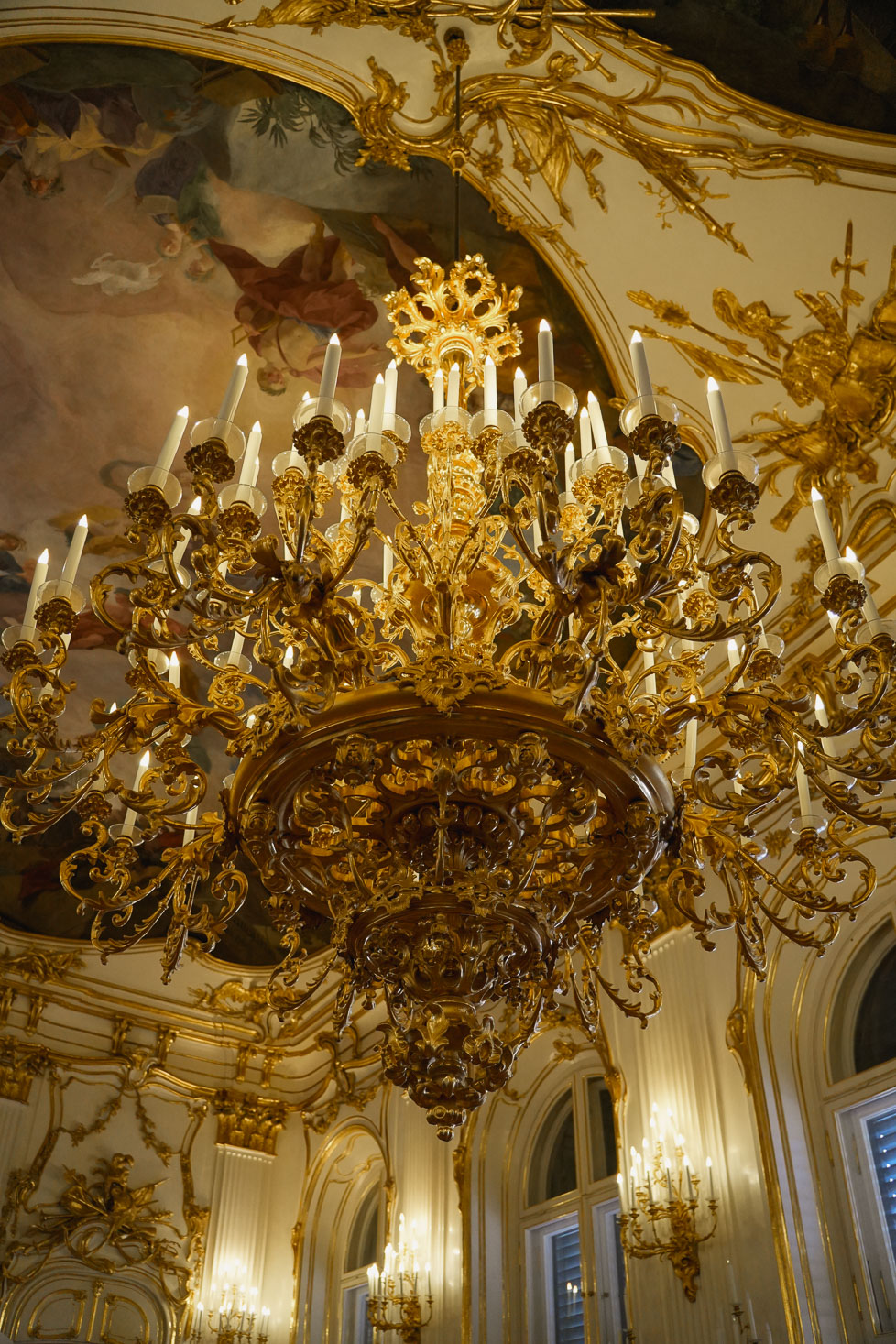
There are a couple of different tours you can take of the palace so depending on how much time you have and how much you want to see one may be better than the other. We did the grand tour which gave us access to the piano nobile (main floor) as well as the private apartments of Franz Joseph and Elisabeth, the southern reception rooms, and the State Apartments.
It took us a little over an hour to go through everything and to take pictures as we went.
Hofburg Royal Complex
Heading back into the city center, it’s time to visit the Hofburg Royal Complex, sometimes also referred to as the Hofburg Palace.
The complex served as the former imperial residence of the Habsburg dynasty for over 600 years. Today, it houses several museums and government institutions. Some of the most notable buildings include the Austrian National Library, the Spanish Riding School, and the Austrian President’s office.
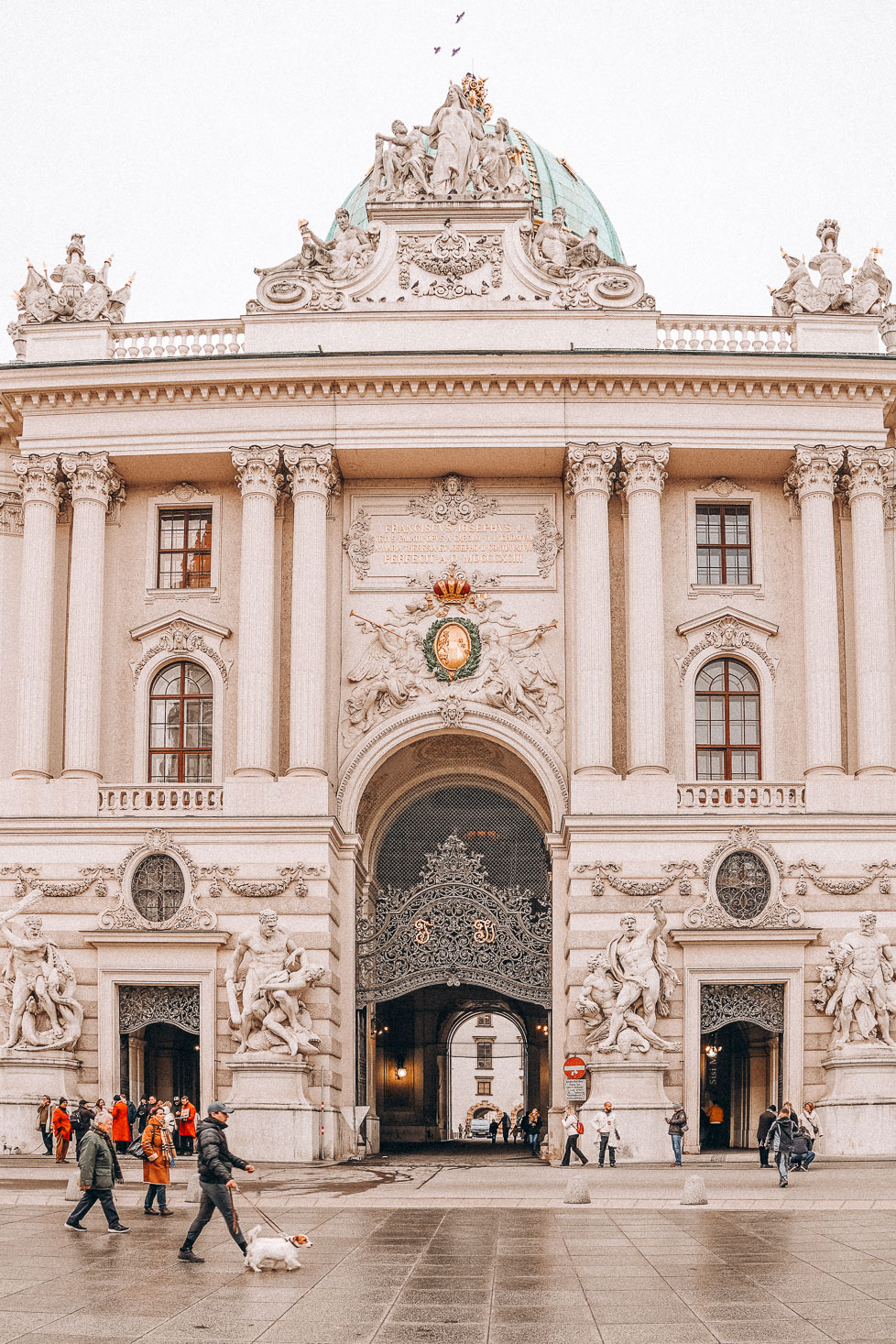
When we first arrived in Vienna, our Bolt driver said you’d need at least five days in Vienna to see everything and I would definitely have to agree with him. It could easily take you a full day just to explore the complex alone.
We walked around the complex a little bit and then visited the Austrian National Library. Founded in 1368 by Duke Albert III, the Austrian National Library is one of the oldest libraries in Europe. Its collection features over 12 million books, manuscripts, maps and historical documents.
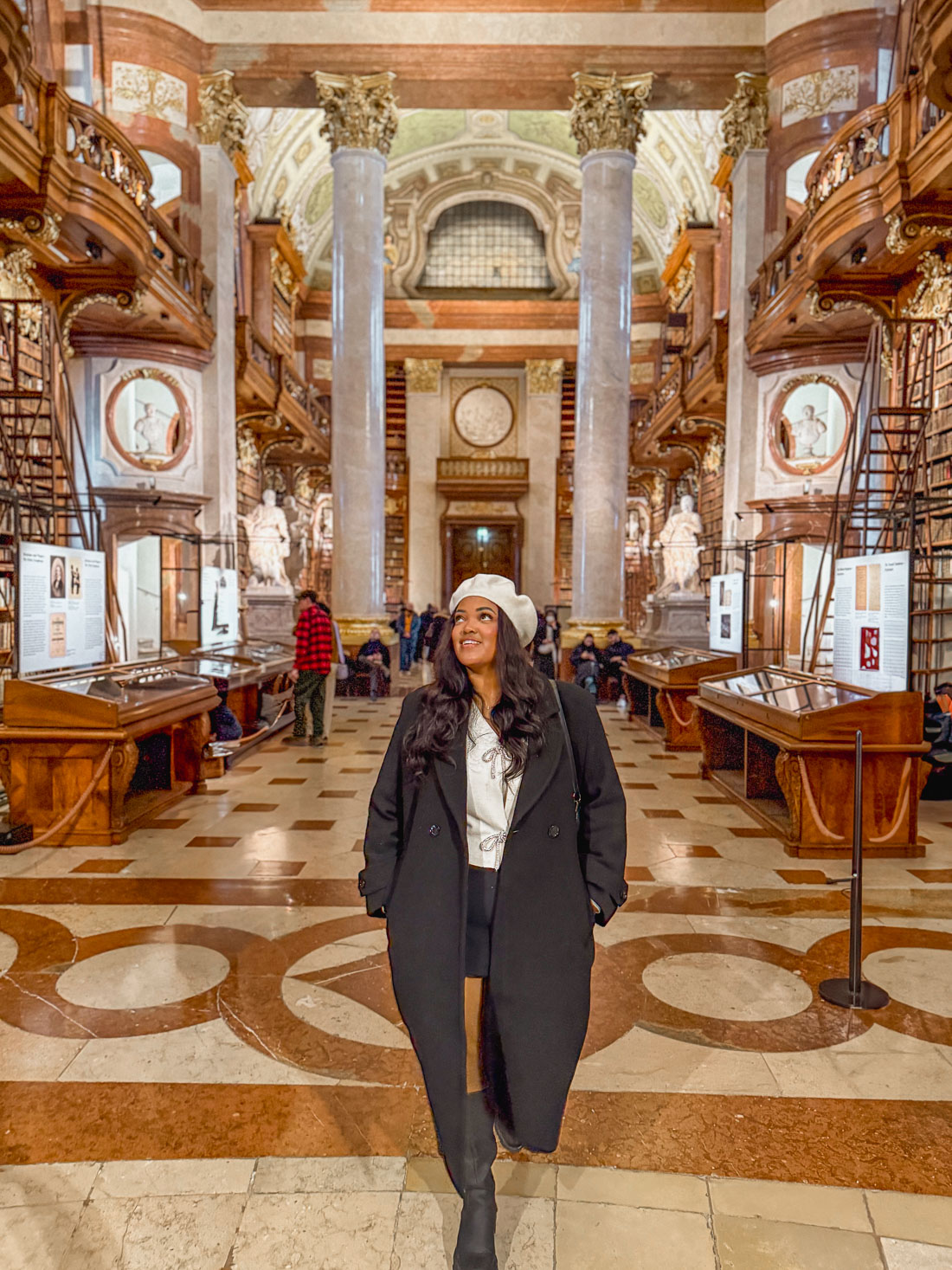
The highlight of the library is the Prunksaal (State Hall). The State hall is a beautiful Baroque-style room with high ceilings, towering, ornate bookshelves, and beautiful frescoes. It’s such an incredible space and well worth a visit.
After the library, you could make your way to the Austrian Parliament Building which isn’t too far away and then find somewhere to grab a bite to eat for lunch.
We ended up heading back to our room a little after visiting the library to take a break and get ready for our nighttime activities.
Gerstner K. u. K. Hofzuckerbäcker
After our afternoon break, we went to Gerstner K. u. K. Hofzuckerbäcker, or Café Gerstner for short, for a little pre-show bite.
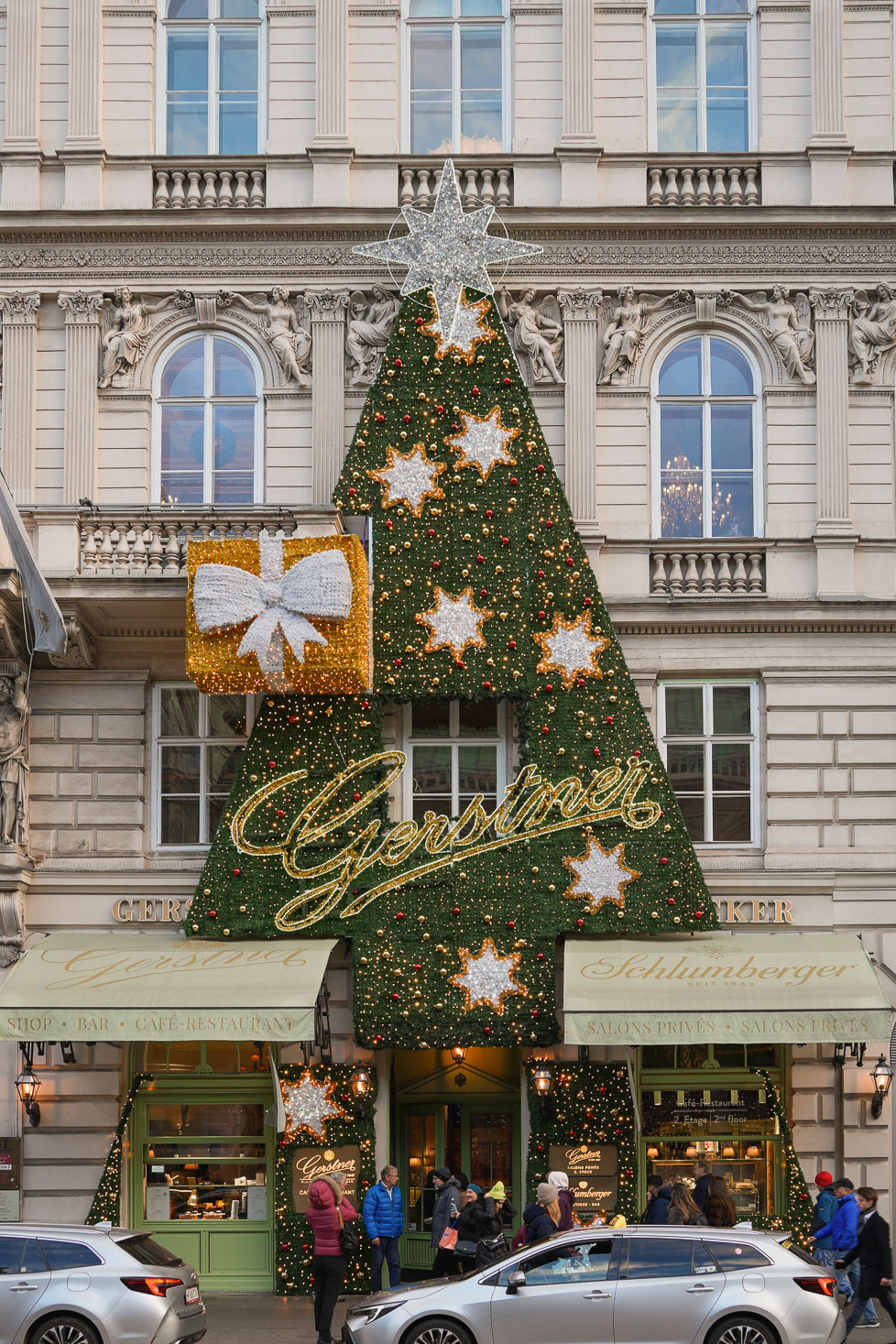
Café Gerstner is one of Vienna’s most historic cafes and is known for its high-quality cakes, pastries, and confection. The cafe is spread across three floors, each of which has different offers.
Their shop is on the ground floor and it is where you can buy pastries and other goods for takeaway. The Cafe Bar is on the first floor and the Cafe Restaurant is on the second floor. The bar serves breakfast, snacks, drinks and pastries, and the restaurant offers Viennese cuisine and sweets.
I booked us for the restaurant but there ended up being a private event that night so we had coffee and pastries in the bar. I got the apple strudel with vanilla sauce and Brooke got the Haustorte which the server recommended over the Sachertorte.
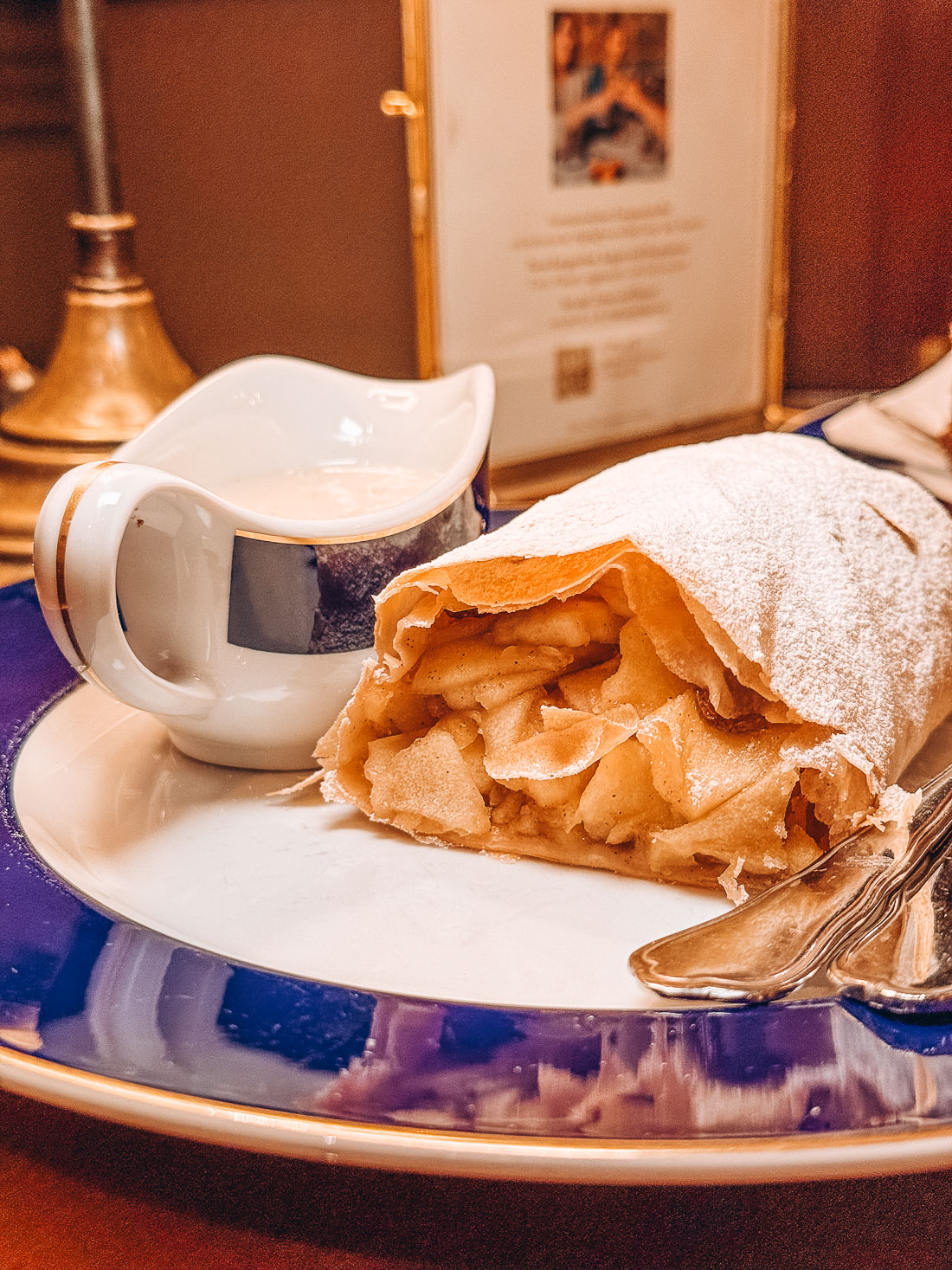
Catch a Show at the Vienna State Opera
To wrap up day two, head over the Vienna State Opera for a show.
Don’t worry if opera isn’t your thing. The Vienna State Opera also hosts ballets and concerts. We saw The Winter’s Tale, a ballet based on William Shakespears’ play of the same name. We sat in one of the boxes closer to the stage and had trouble seeing certain scenes. I recommend getting seats closer to the center so you have a full view of the stage.
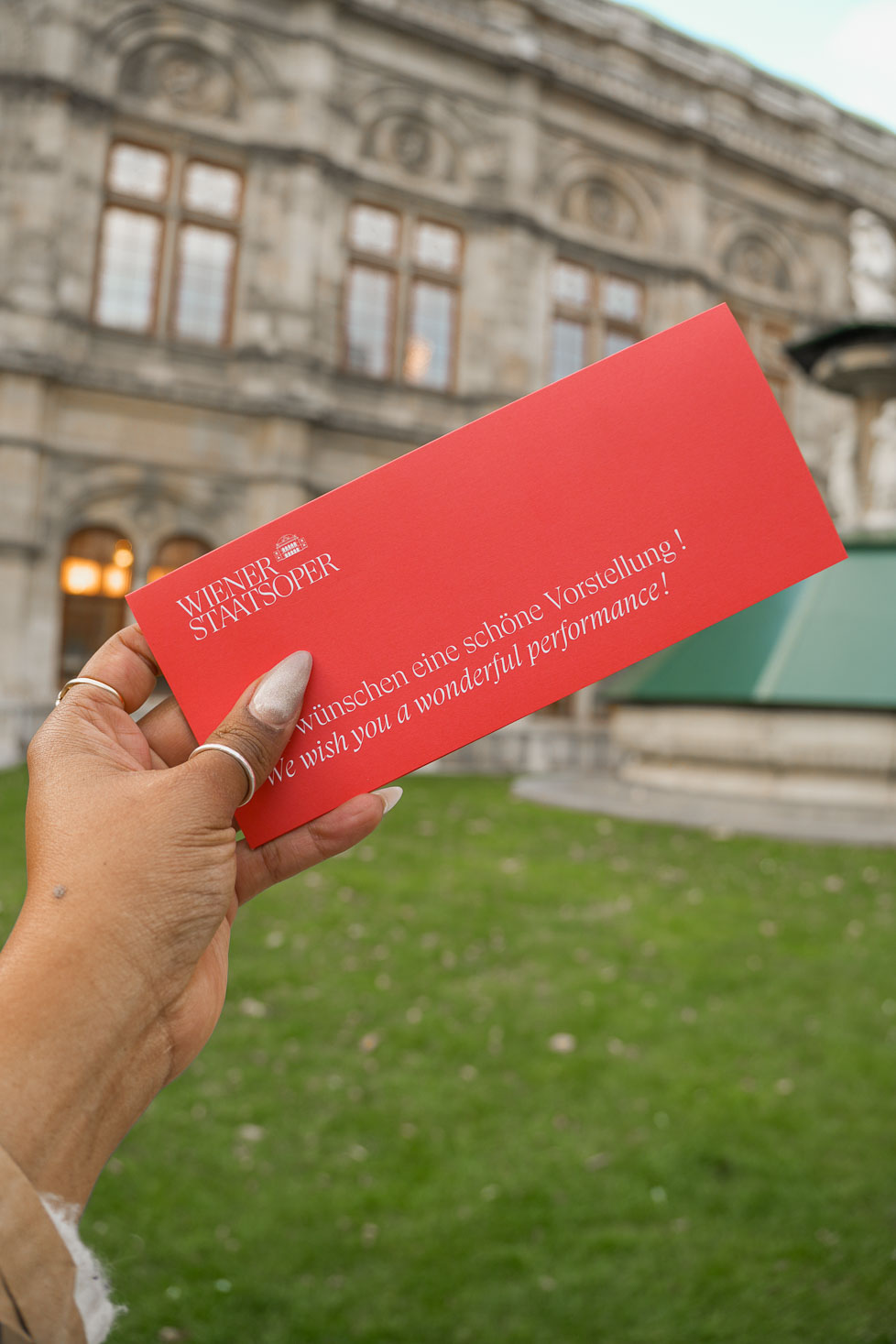
Also, as far as dress code goes, some people will be super dressy, while others will be in more casual clothes. I personally wore a pleated black midi skirt, a black sweater and a pair of low, black block heels, which was ideal because I didn’t feel over or under-dressed. I also read somewhere the nicer the seats the nicer you should dress. Not sure how true that is, but might be worth keeping in mind.
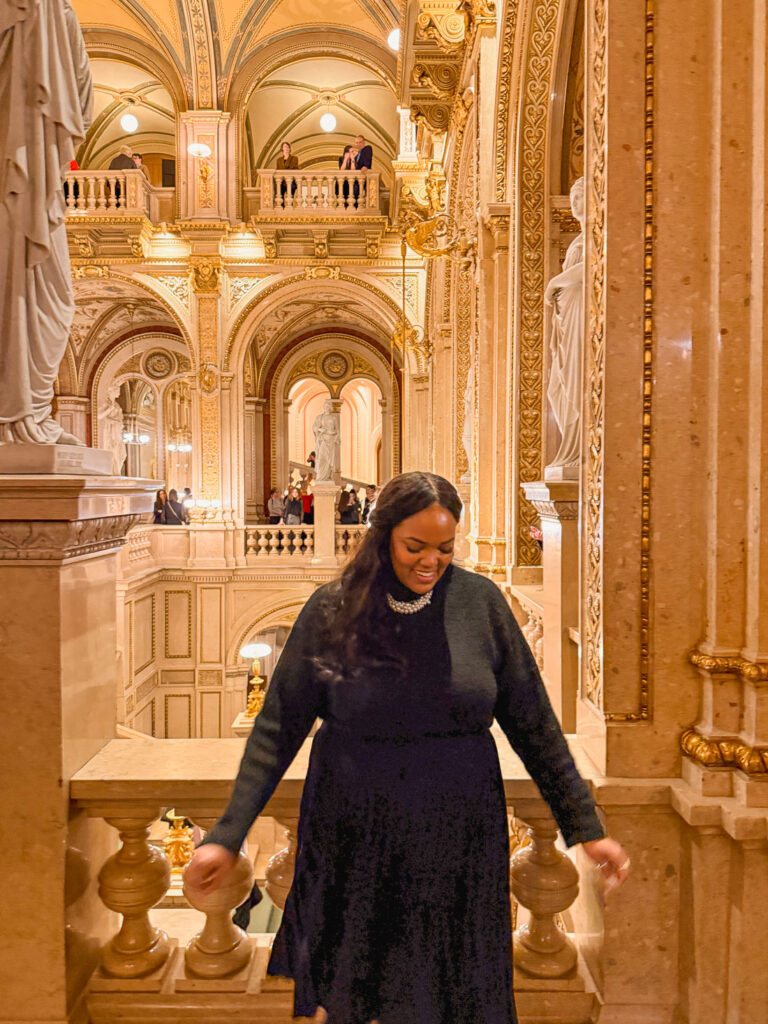
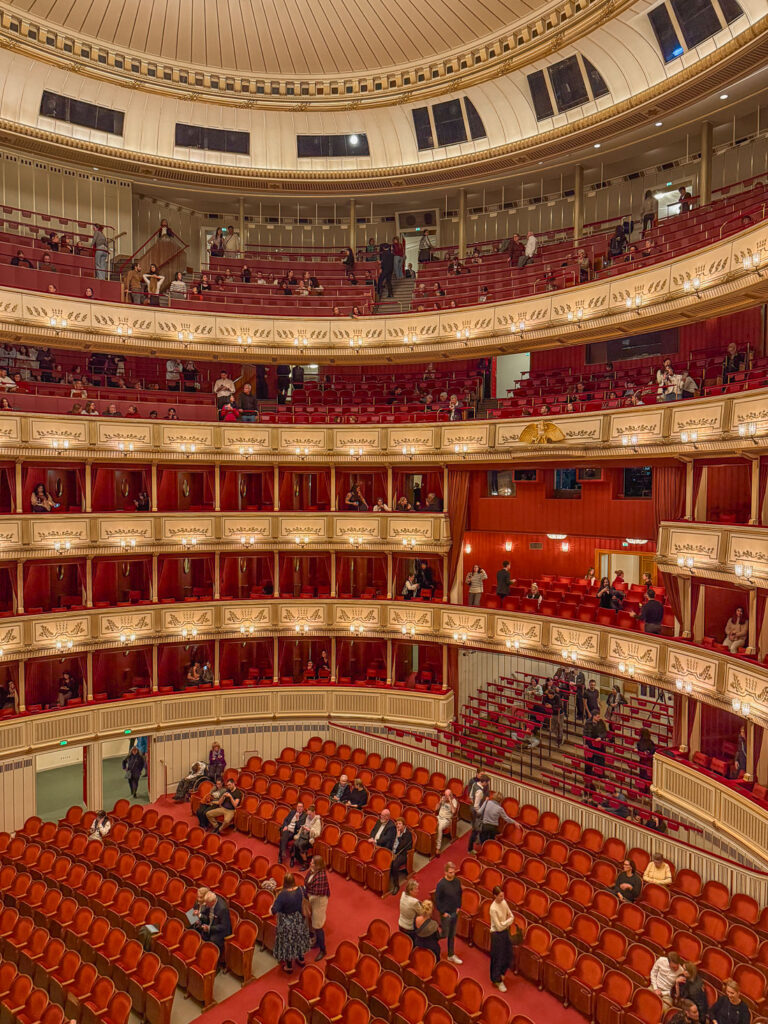
3-Day Vienna Itinerary: Day 3
Belvedere Palace
We skipped our coffee and cake breakfast at Cafe Imperial Wien to sleep in a little longer. If you’re someone who has to start the day off with breakfast, go ahead and start there. If not, head straight to Belvedere Palace.
Belvedere Palace is a UNESCO World Heritage site known for its stunning architecture, sprawling gardens, and impressive art collection.
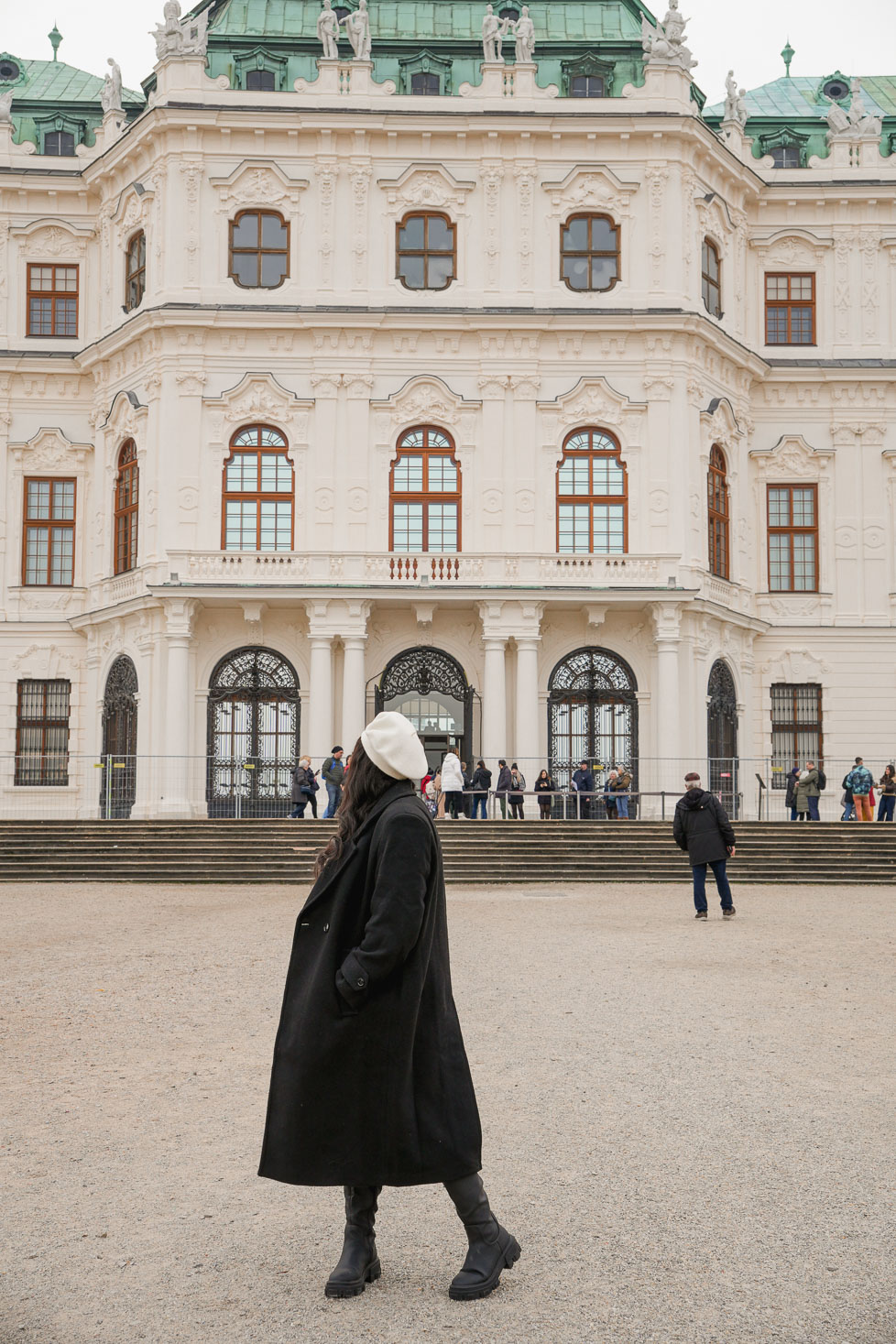
The palace is broken into two sections, Upper and Lower Belvedere. Upper Belvedere is the more popular of the two and houses the permanent collection, which covers everything from medieval religious art to 20th century masterpieces. Many people visit Upper Belvedere just to view Gustav Klimt’s “The Kiss” which is part of the permanent collection along with Ego Schiele’s “The Embrace.”
Lower Belvedere houses temporary exhibitions showcasing contemporary art or special themes.
That all being said, visiting Upper Belvedere is more so about the art than it is the palace itself. There are a couple of placards with historical facts about some of the rooms and their original purposes, but again it’s more so a gallery.
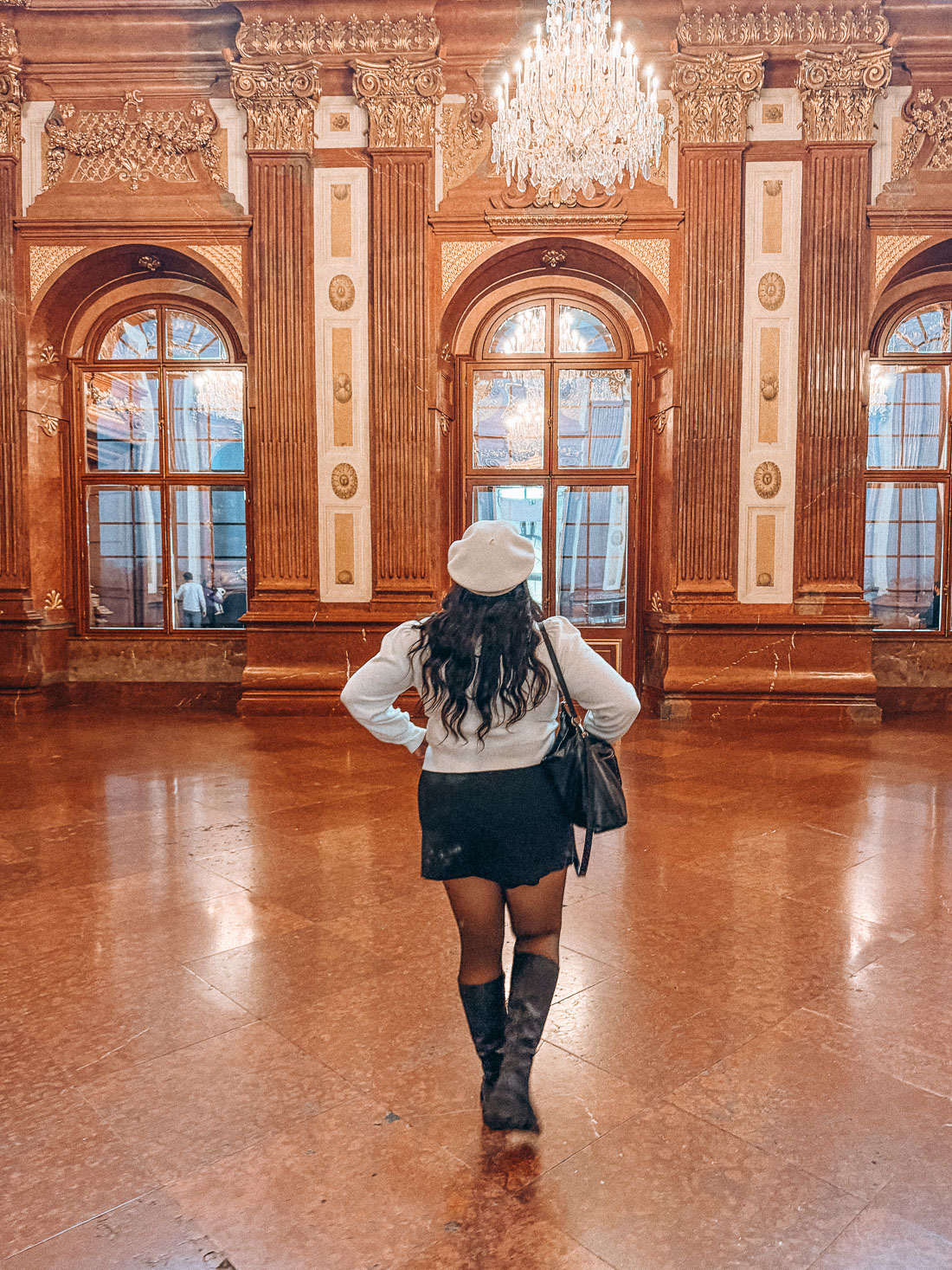
St. Charles’ Church
About a 15 minute walk away from Belvedere Palace is St. Charles’ Church (Karlskirche).
Consecrated in 1737, St. Charles’ Church was commissioned by Emperor Charles VI as an votive offering to Saint Charles Borromeo, the patron saint of plague victims. Vienna was ravaged by the plague, so Emperor Charles VI promised to build a magnificent church if the city was spared from further devastation.
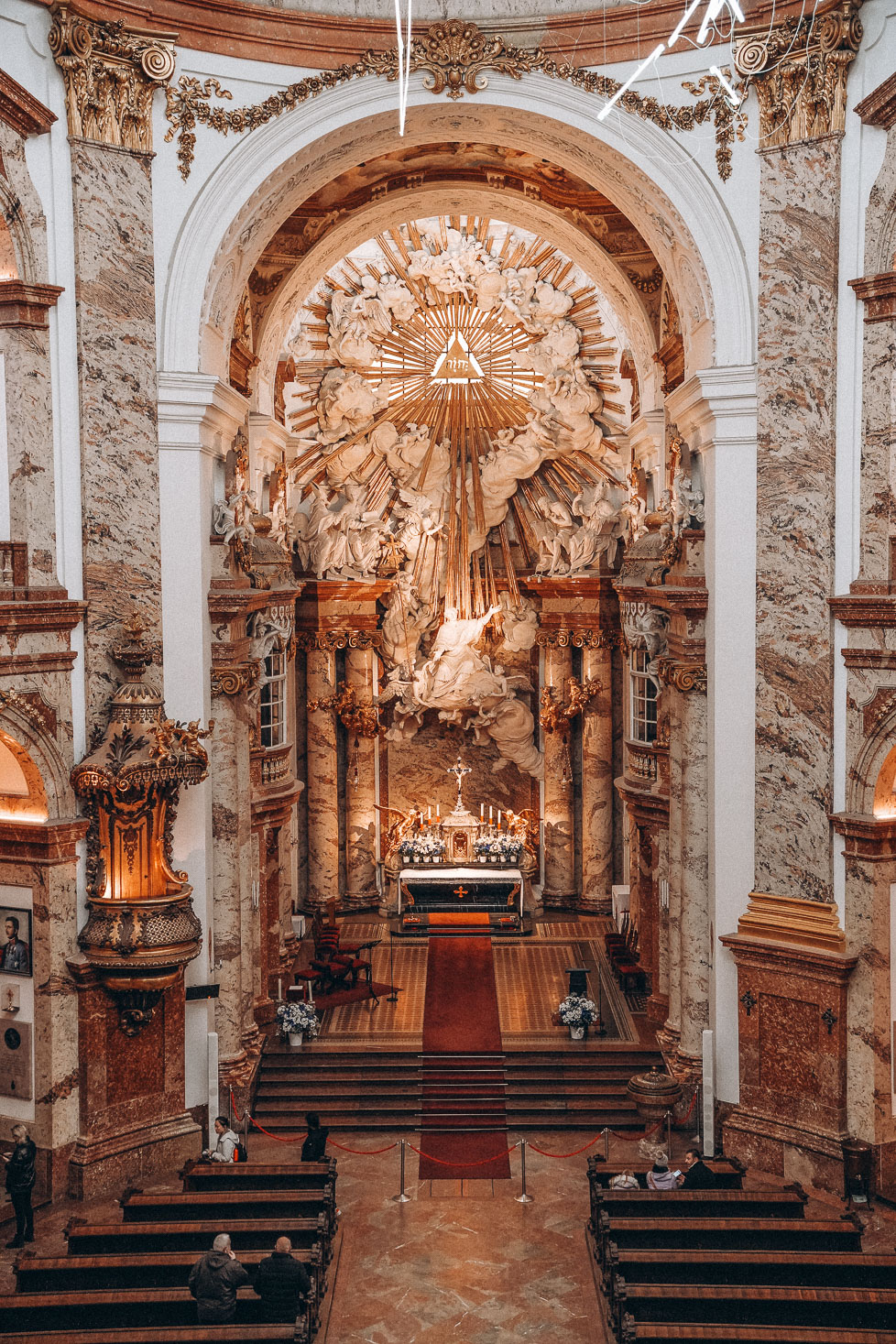
With a blend of Italian baroque influences and the grandeur and classical elements of ancient Greek and Roman Style, the church is a sight to behold. Its striking grand altar and massive dome adorned with intricate frescoes, make it easily one of the most awe-inspiring sites in Vienna.
Another awesome aspect of the St. Charles’ Chruch is the panoramic views of the city you get from the viewing platform at the top of the dome. It can get pretty windy up there so if you’re visiting during the winter like I did, prepare for the chill.
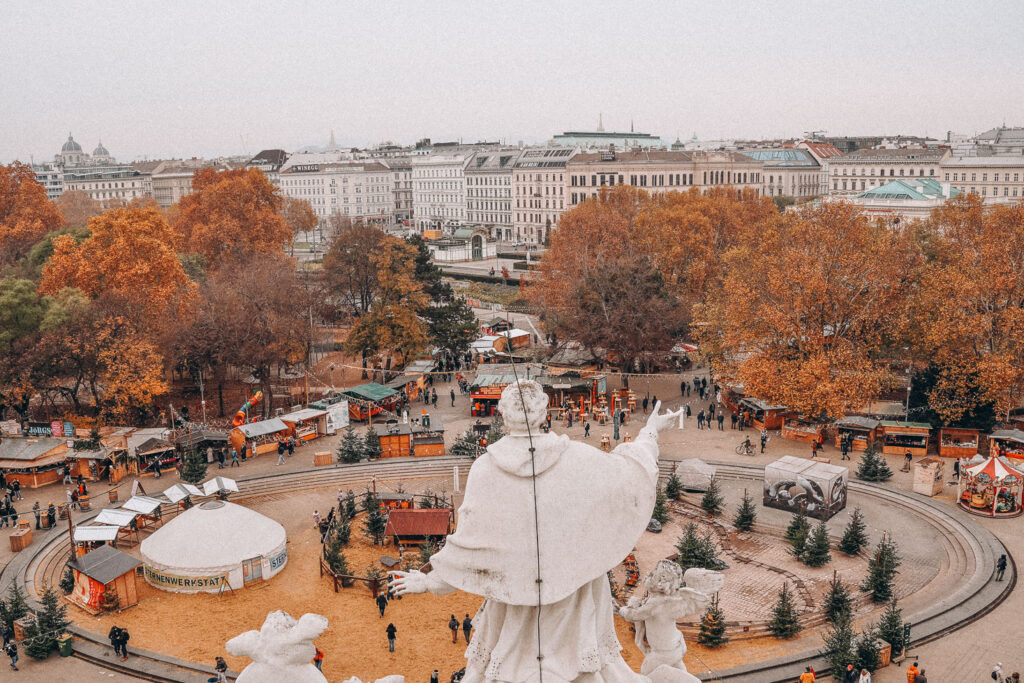
Brasserie Palmenhaus
From the church, head over to Brasserie Palmenhaus for lunch.
Housed in the building originally built to be a greenhouse for exotic plants for the Imperial Gardens, Brasserie Palmenhaus is a beautiful eatery serving up a mix of classic Austrian dishes and other European cuisine.
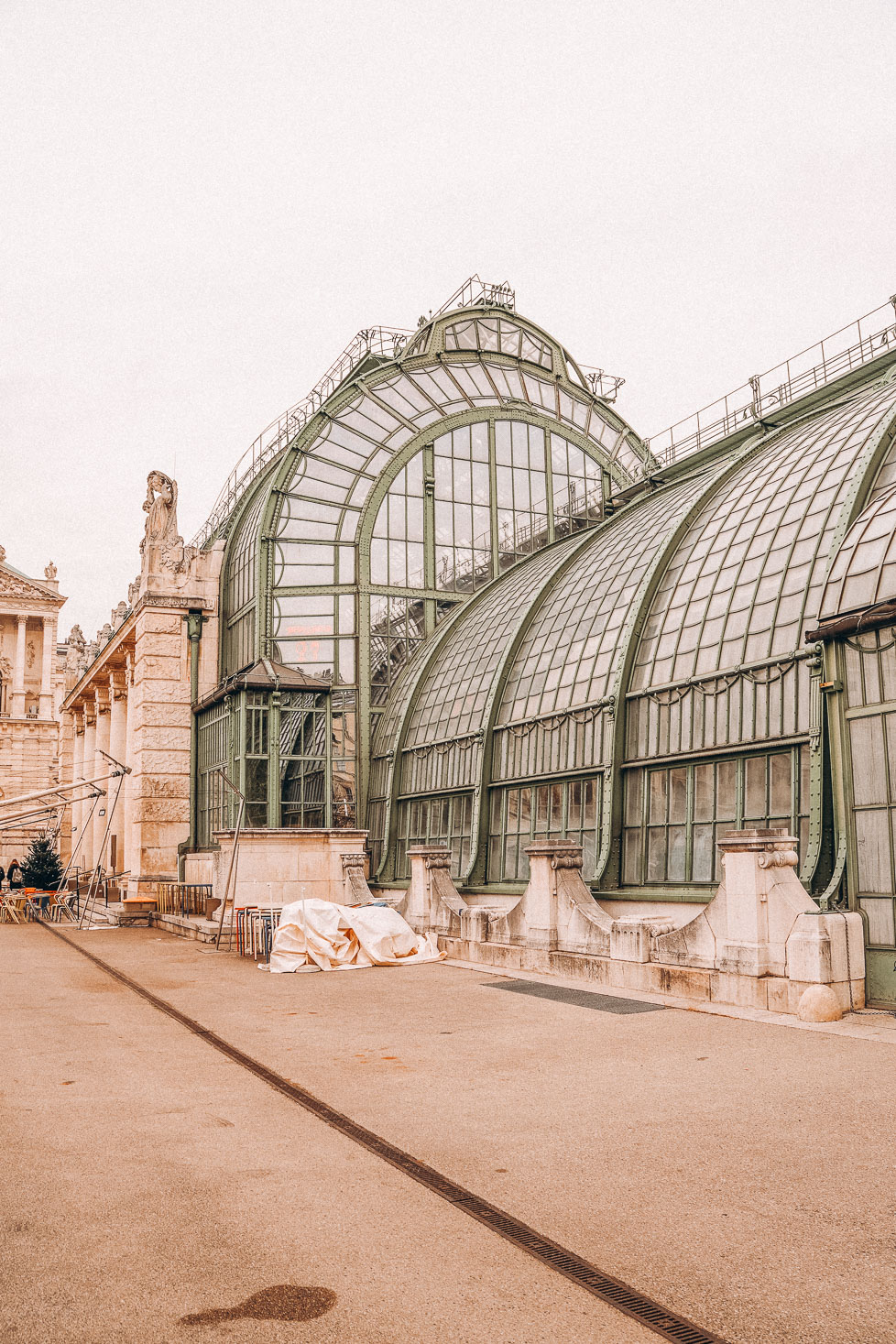
I had some incredible meatballs that were probably the best thing I ate in Vienna besides the wiener schnitzel from Figlmüller. They also have dishes of the day so there’s always something new to try.
This place was pretty busy when we went so I highly recommend getting a reservation.
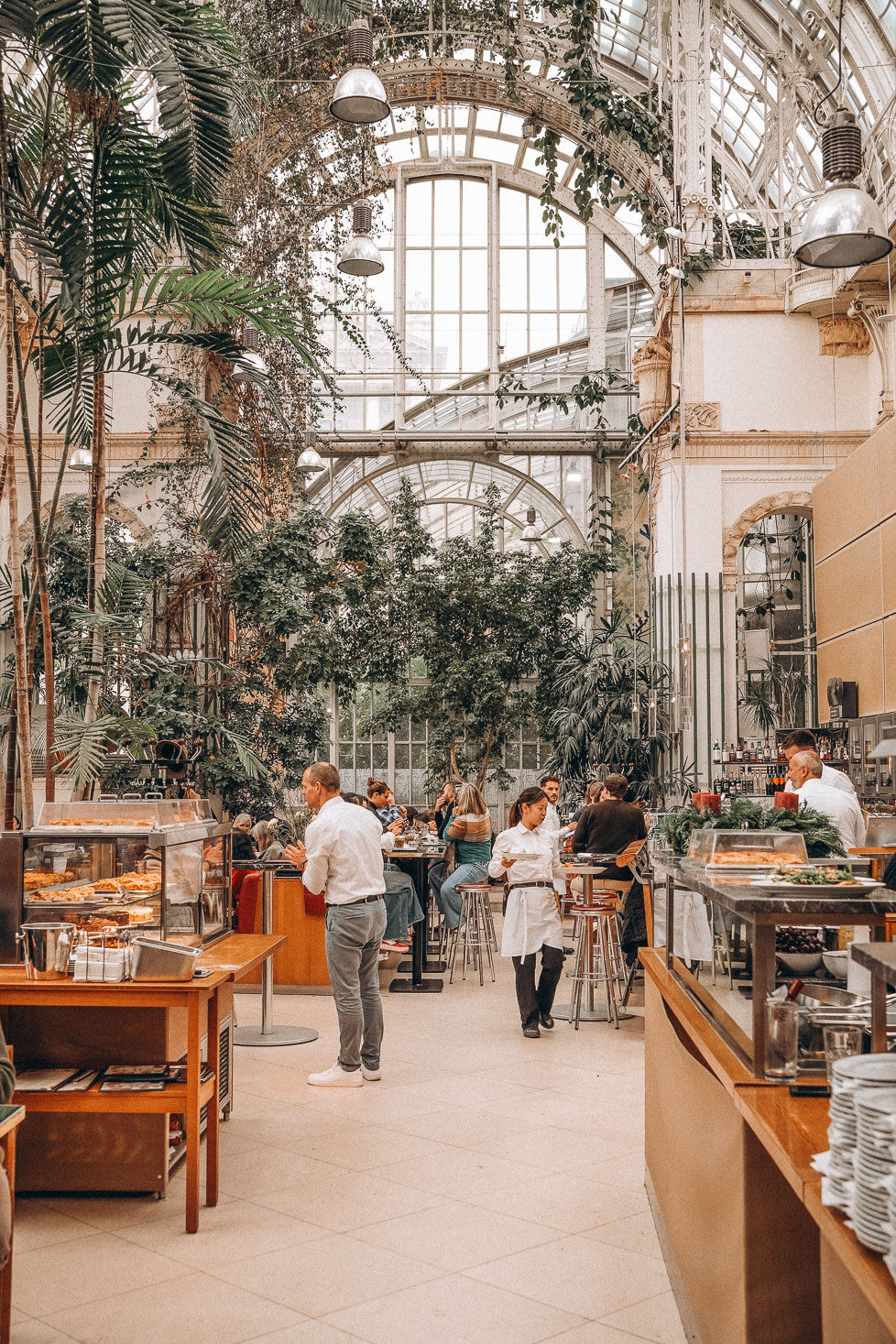
Vienna City Hall / Rathausplatz
Vienna City Hall (Wiener Rathaus) is one of the most recognizable buildings in Vienna. Serving as the seat of the city’s municipal government, it’s not just a pretty building but also a place that holds political significance.
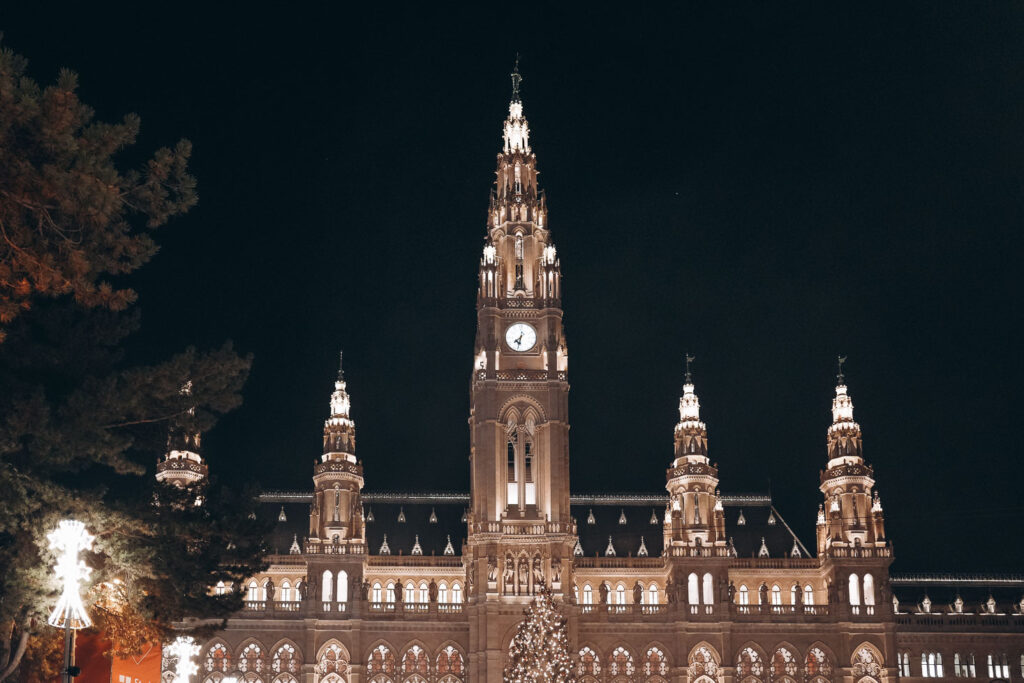
In front of city hall is Rathausplatz, a large square that hosts events, festivals, and seasonal markets. We visited Vienna during Christmas time so we got to experience Wiener Christkindlmarkt, one of Vienna’s most popular Christmas markets.
During other times of the year, the square hosts open-air concerts, film festivals, and other fun events. So no matter when you’re visiting Vienna you’re bound to find something going on in the square.
Dinner at Eiles Cafe
After leaving Rathausplatz, its time to grab dinner.
We didn’t have a plan for dinner our last night in Vienna, so we just walked around a bit and stumbled upon Eiles Cafe.
The cafe has a cozy, local feel which was the perfect way to wrap up our 3 days in Vienna. They serve traditional Austrian dishes as well other European fare up until 11:00 pm.
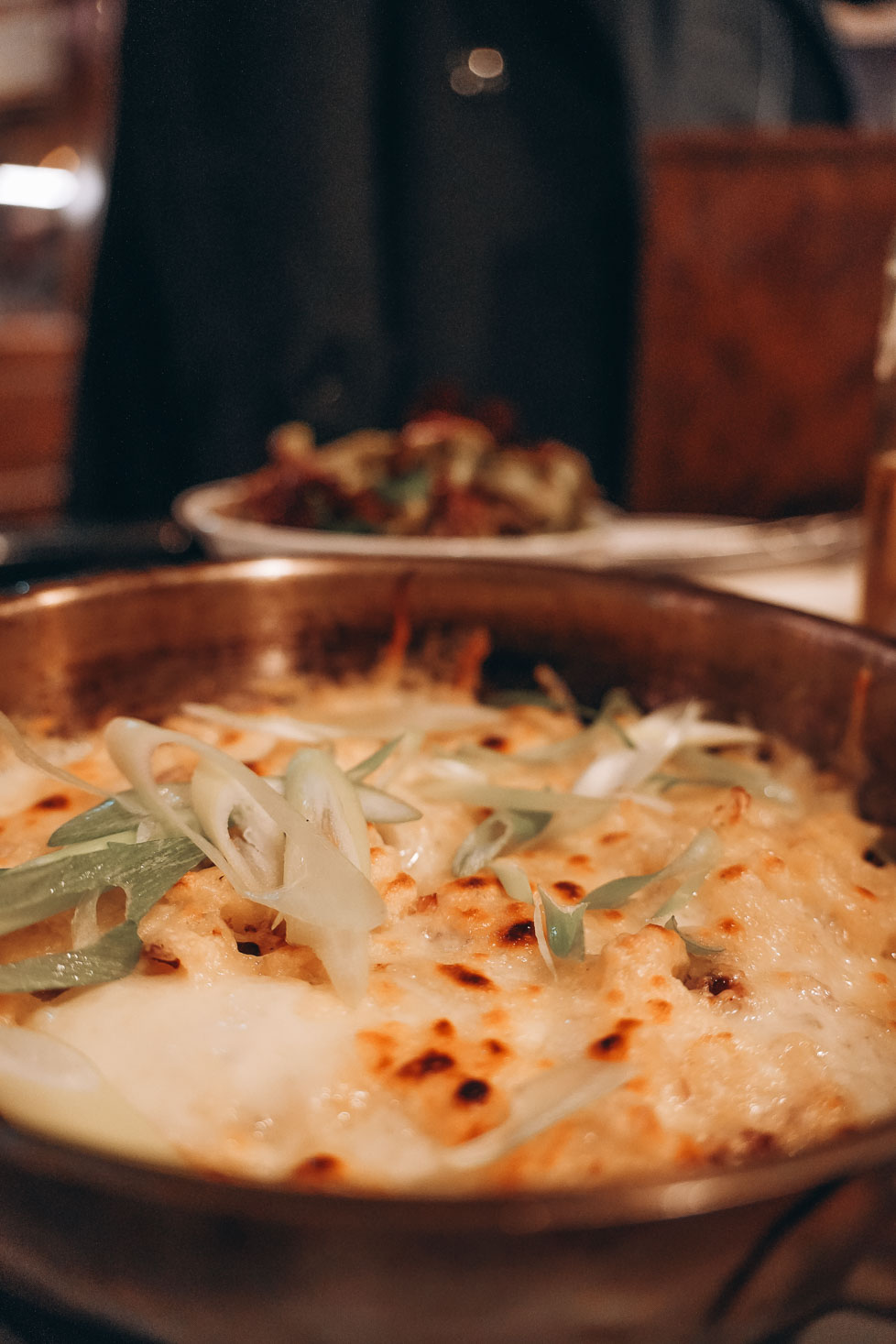
I tried the gratinated gnocci with onions, bacon, and leaf lettuce which was perfectly cheesy and delicious. Brooke tried the club sandwich and said it was pretty good too.
Have more time in Vienna? Take a day trip to Bratislava, Slovakia which is a short train ride away.
How to Get Around Vienna
Public Transportation
Vienna has an extensive public transportation system, which is a reliable and affordable way to get around the city.
- U-Bahn (subway): The subway has 5 lines which covers the city’s most important areas. It’s fast and easy to navigate, and the trains run frequently.
- Trams: The iconic Vienna trams run in both the city center and out to surrounding neighborhoods.
- S-Bahn (commuter trains): If you’re planning on visiting Schonbrunn Palace, Prater Park, or Danube Island you’ll want to hop on one of the S-Bahn trains. These trains are useful to reach outer districts and nearby towns like the aforementioned.
- Buses: Buses are typically found in areas not covered by the subway or tram lines, but they’re great for reaching more residential areas outside the city.
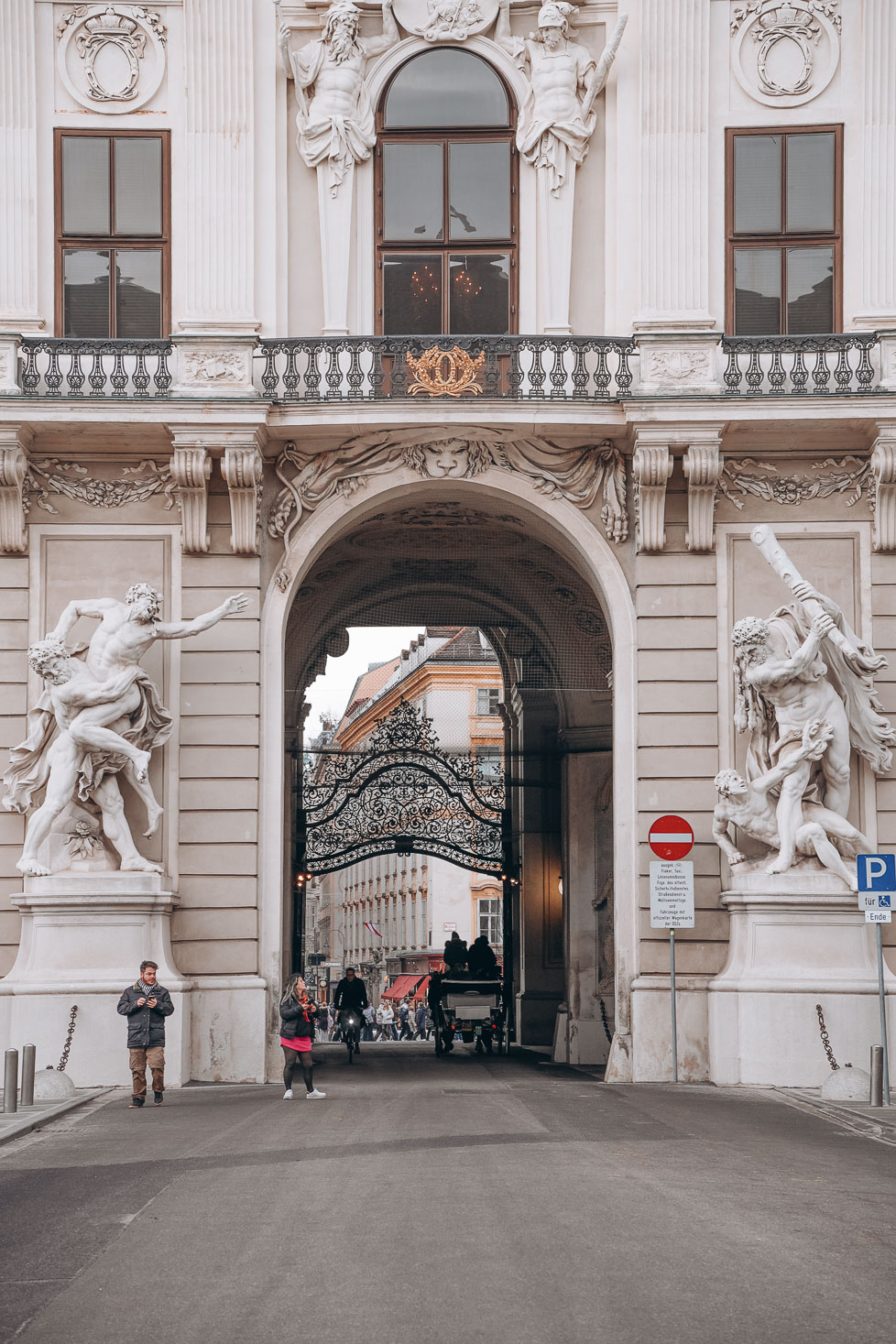
Taxis and Ride Share
There are plenty of taxis available throughout the city. They are lined up outside of major stations and tourism spots. Uber and Bolt also operate within Vienna, and can be fairly reasonable depending on the distance you’re traveling.
I’m someone who doesn’t mind taking public transportation but sometimes it’s just more convenient to hail a taxi or order a Bolt ride.
If you’re traveling solo, then public transportation will definitely be the most cost effective for you. However, if you’re traveling with a partner or a group of friends, taking a taxi may be the better option when weighing convenience and costs.
Where to Stay for 3 Days in Vienna
There are plenty of amazing accommodations in Vienna. You have your typical chains and then there’s plenty of cute, boutique hotels like Hotel Motto.
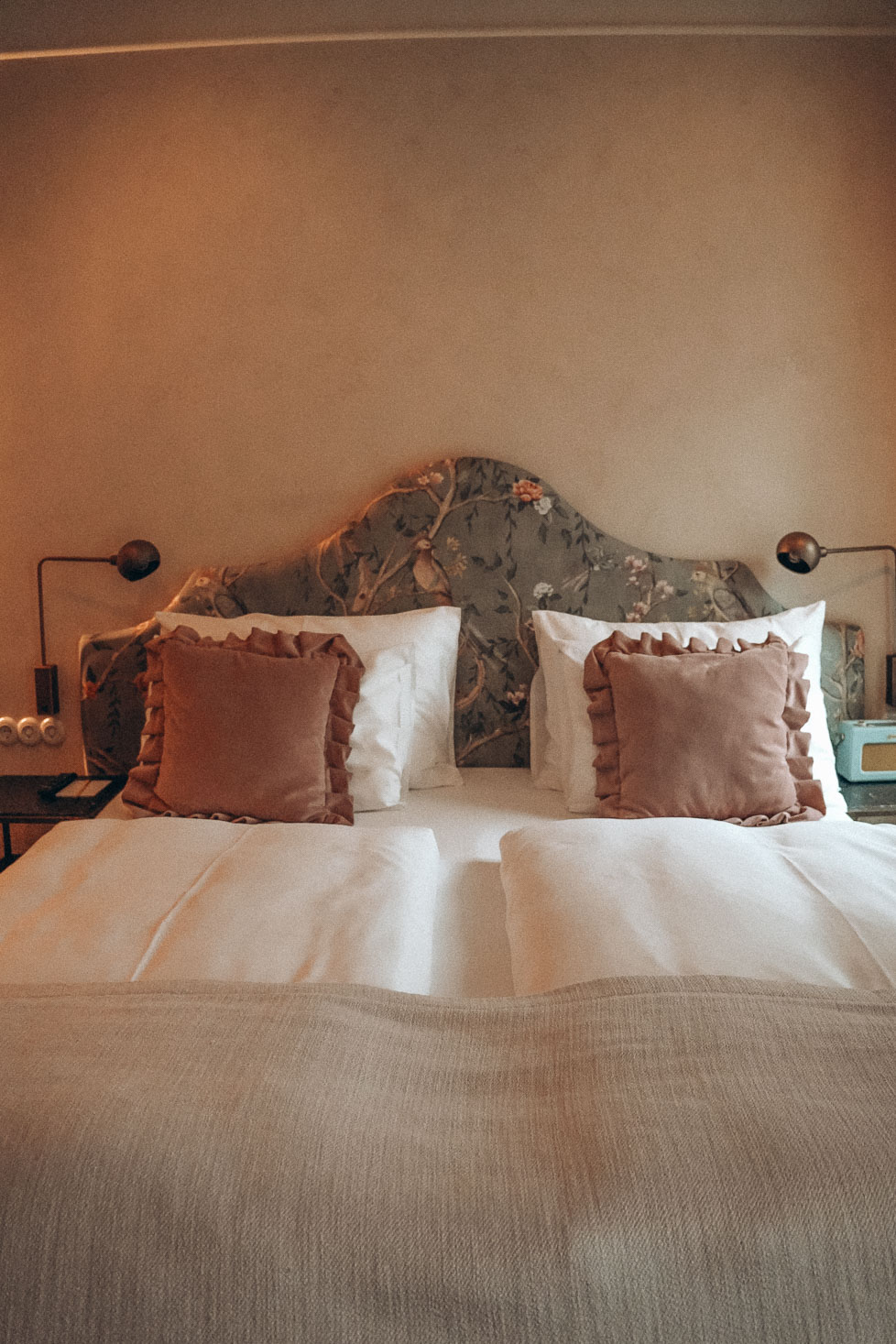
Vienna FAQS
What is Vienna Best Known For?
Vienna is best known for its rich musical history. As the birthplace of some of the world’s most famous composers, Mozart, Beethoven and Bruckner to name a few, the city is considered to be the “world capital of music.”
Is Vienna very expensive?
Vienna can be expensive. Entrances into museums and palaces can add up quickly, and they are a little pricier than in other European cities. I also found food to be more expensive than in Budapest and Prague.
That being said, keep a look out for reduced or free entrance opportunities and consider splitting meals if you’re traveling with others to lower costs.
Is Vienna good for tourists?
In my opinion, Vienna is great for tourists. The locals are friendly, it’s safe to walk around, and there’s plenty to see and do.
Found this guide helpful? Pin my 3-Day Vienna itinerary for later!
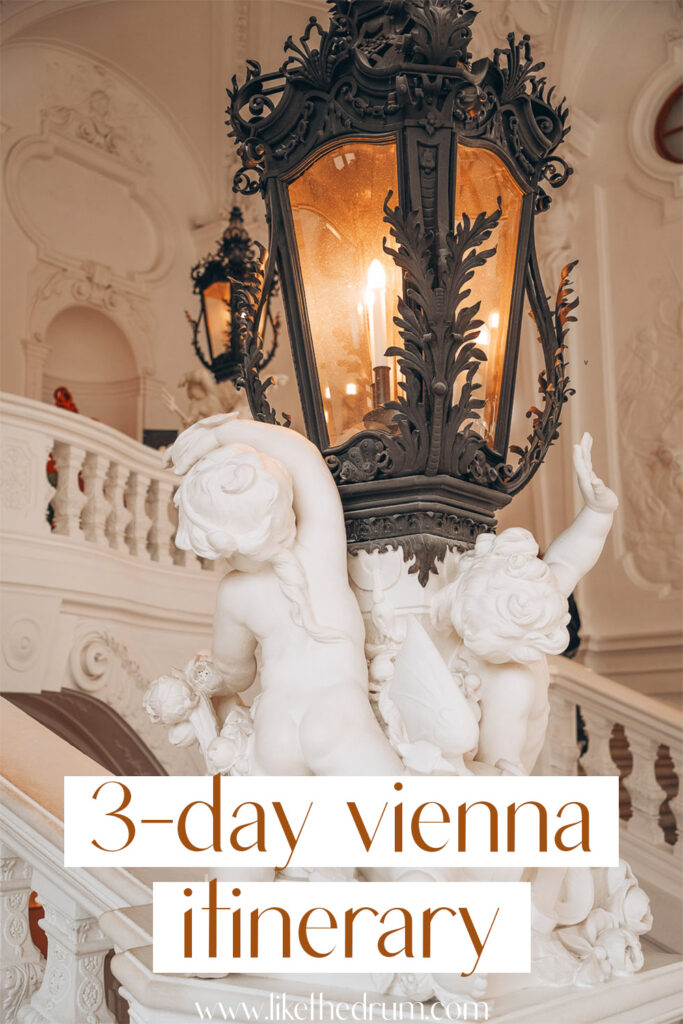
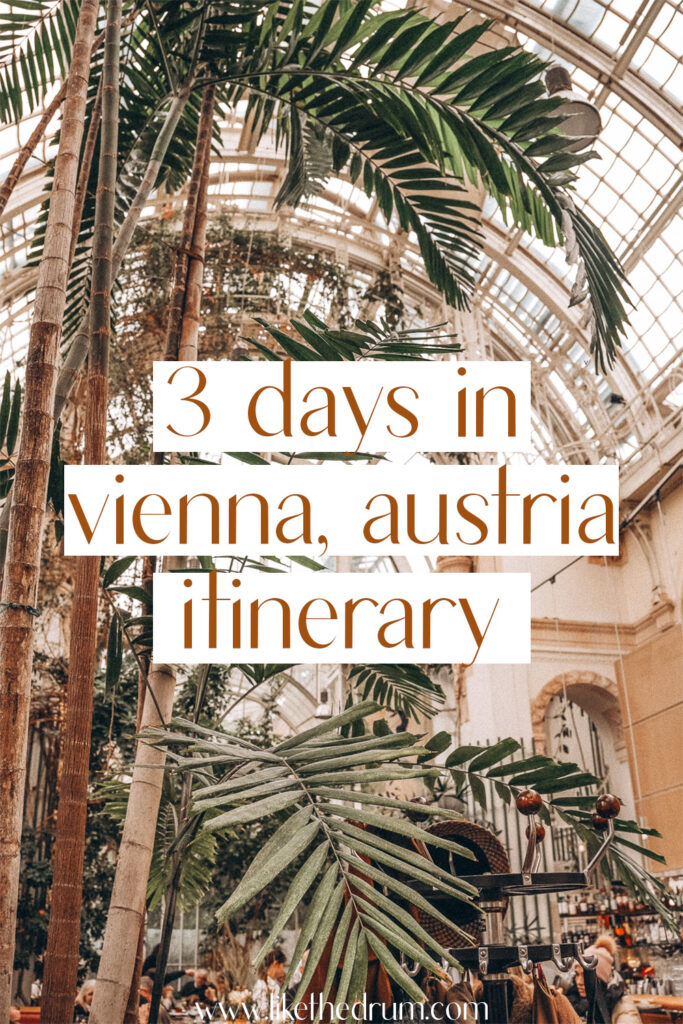
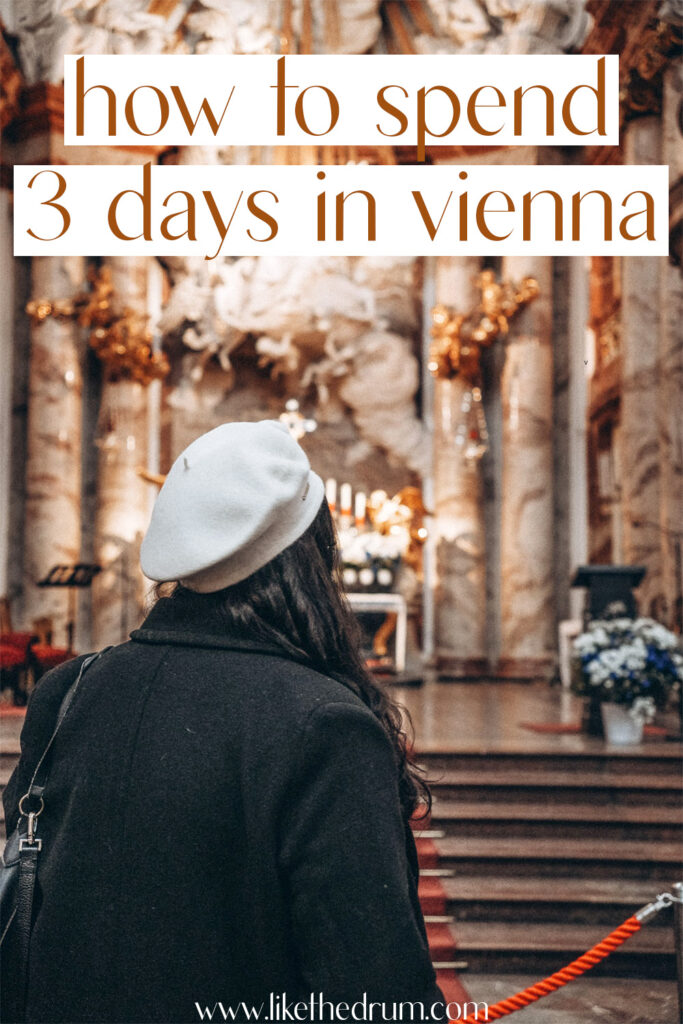

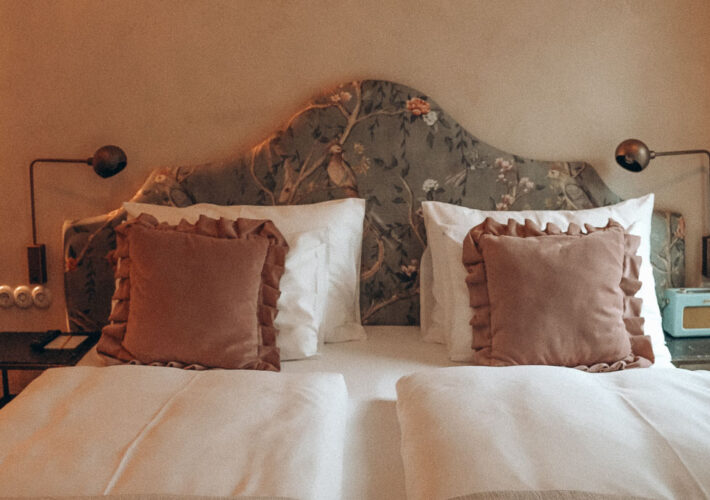
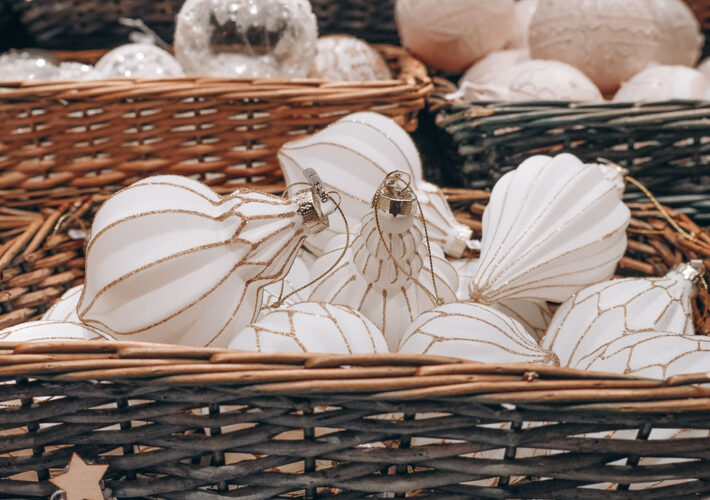

Leave a Comment